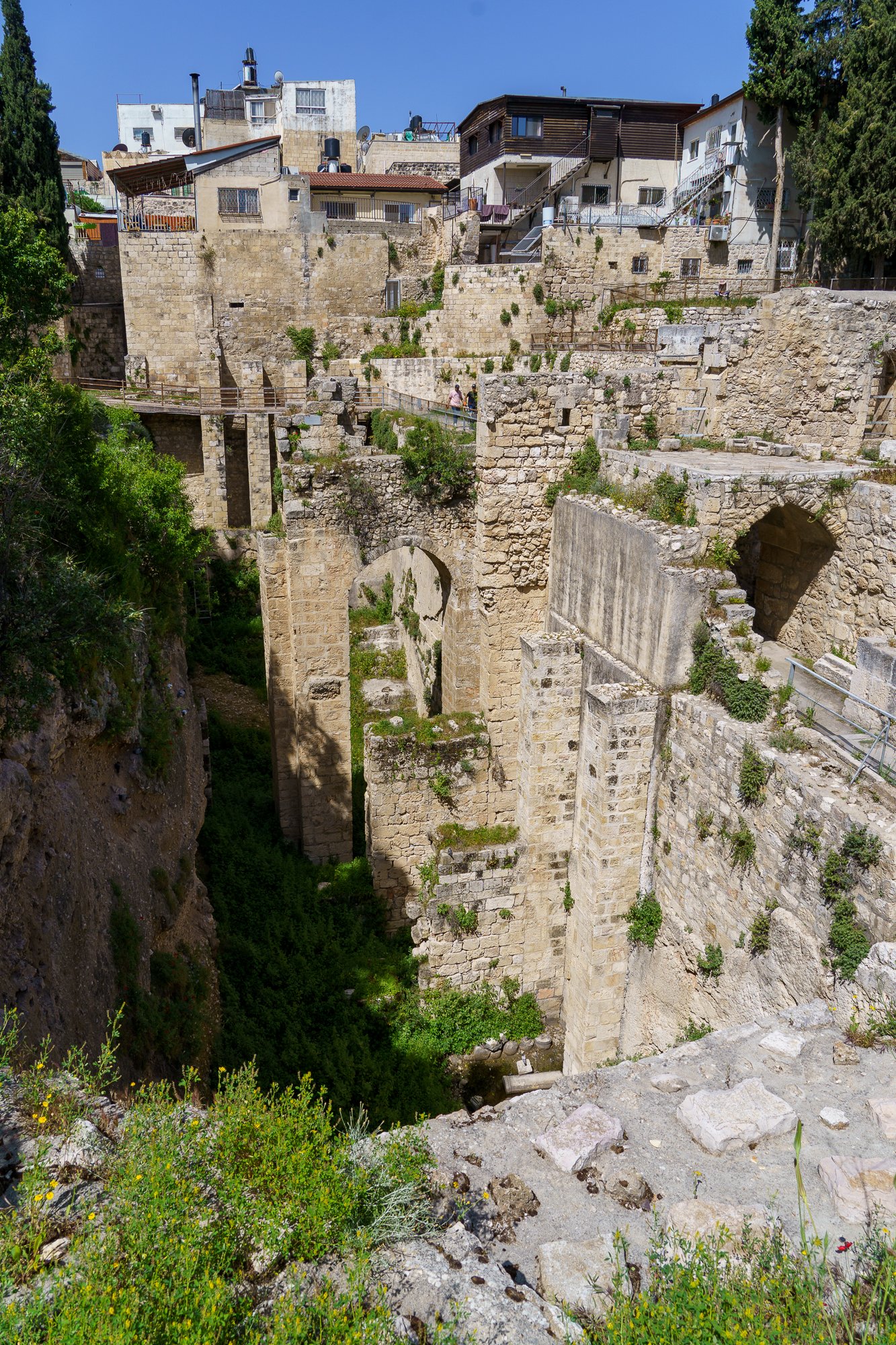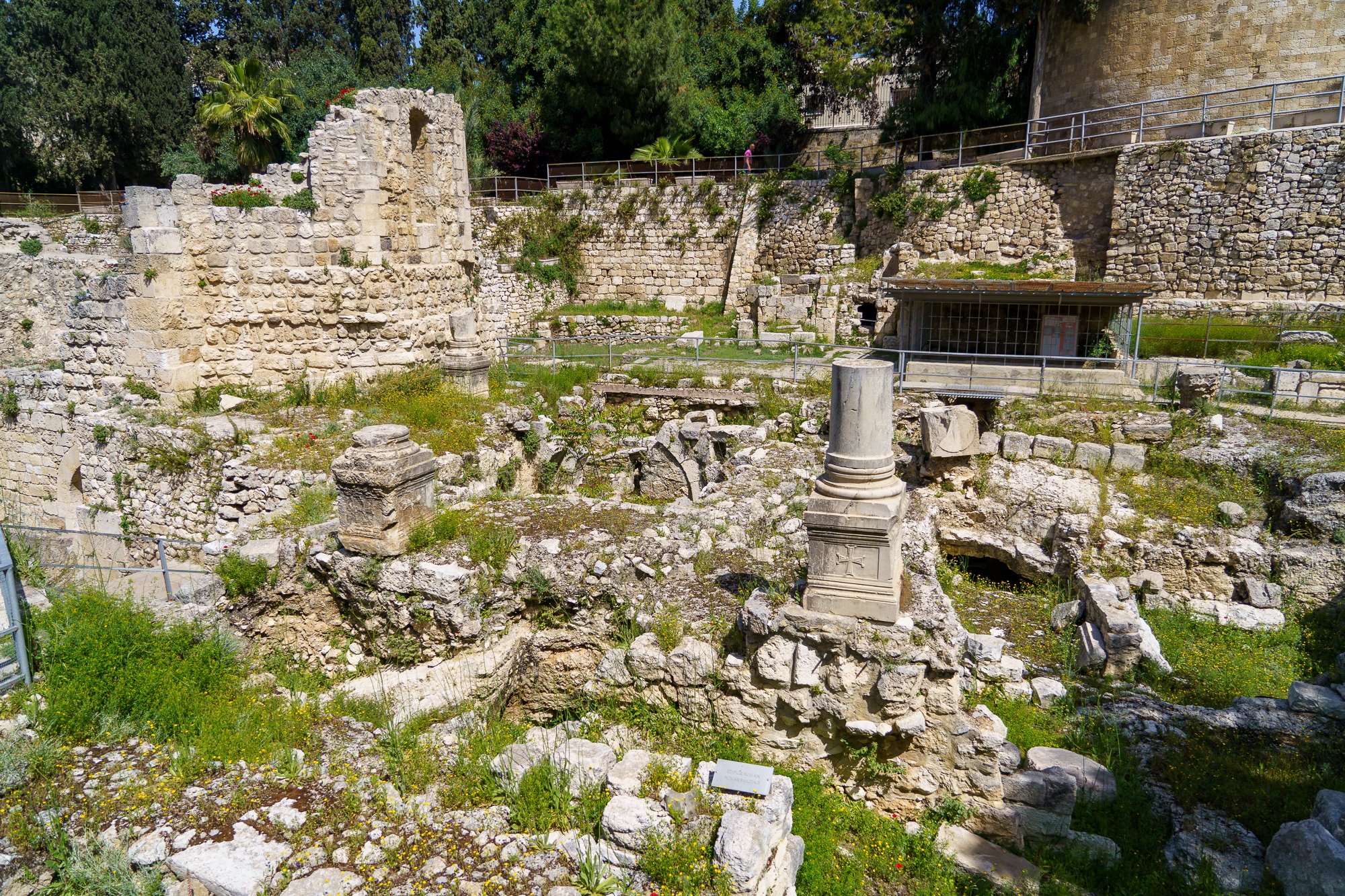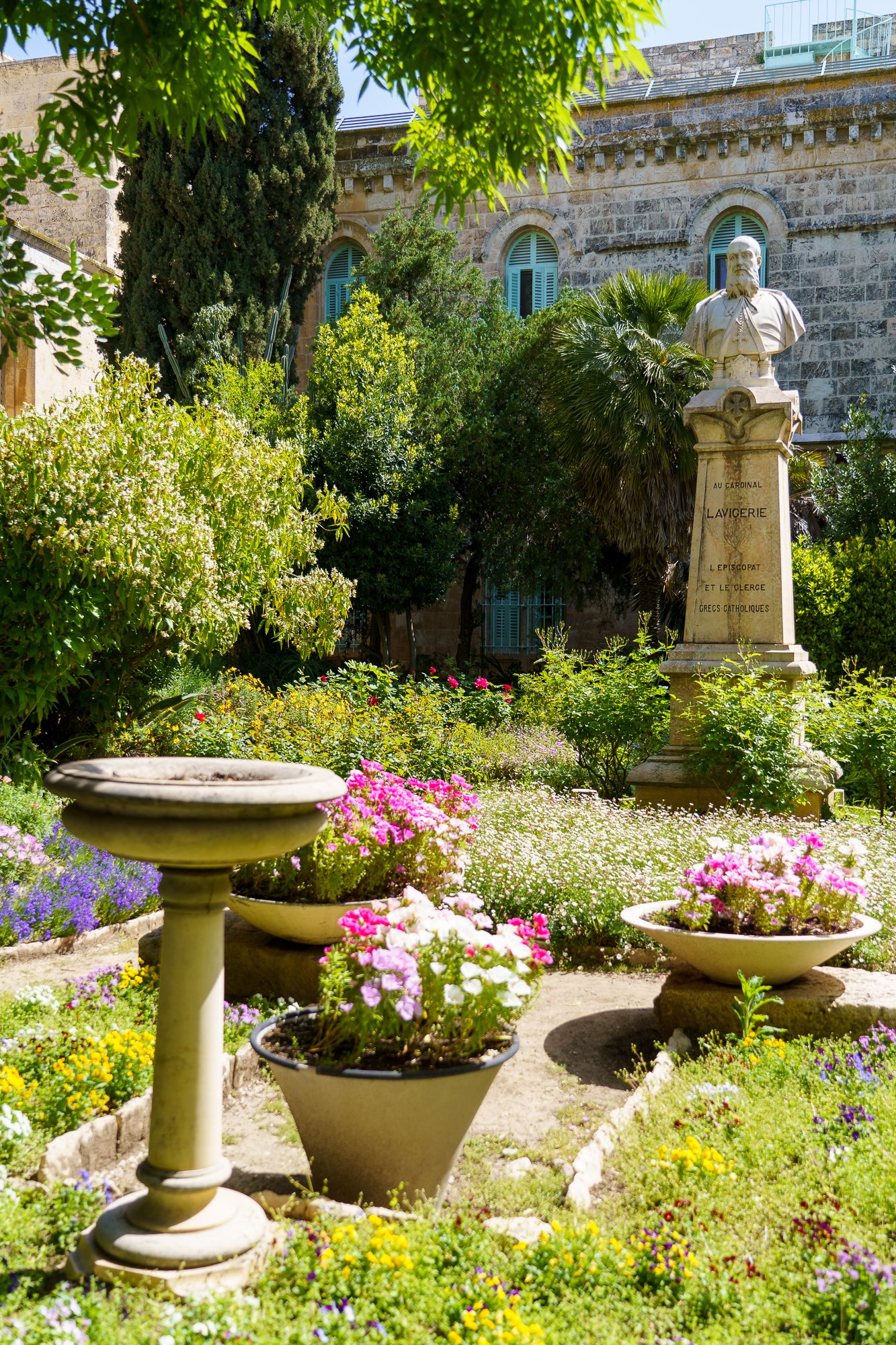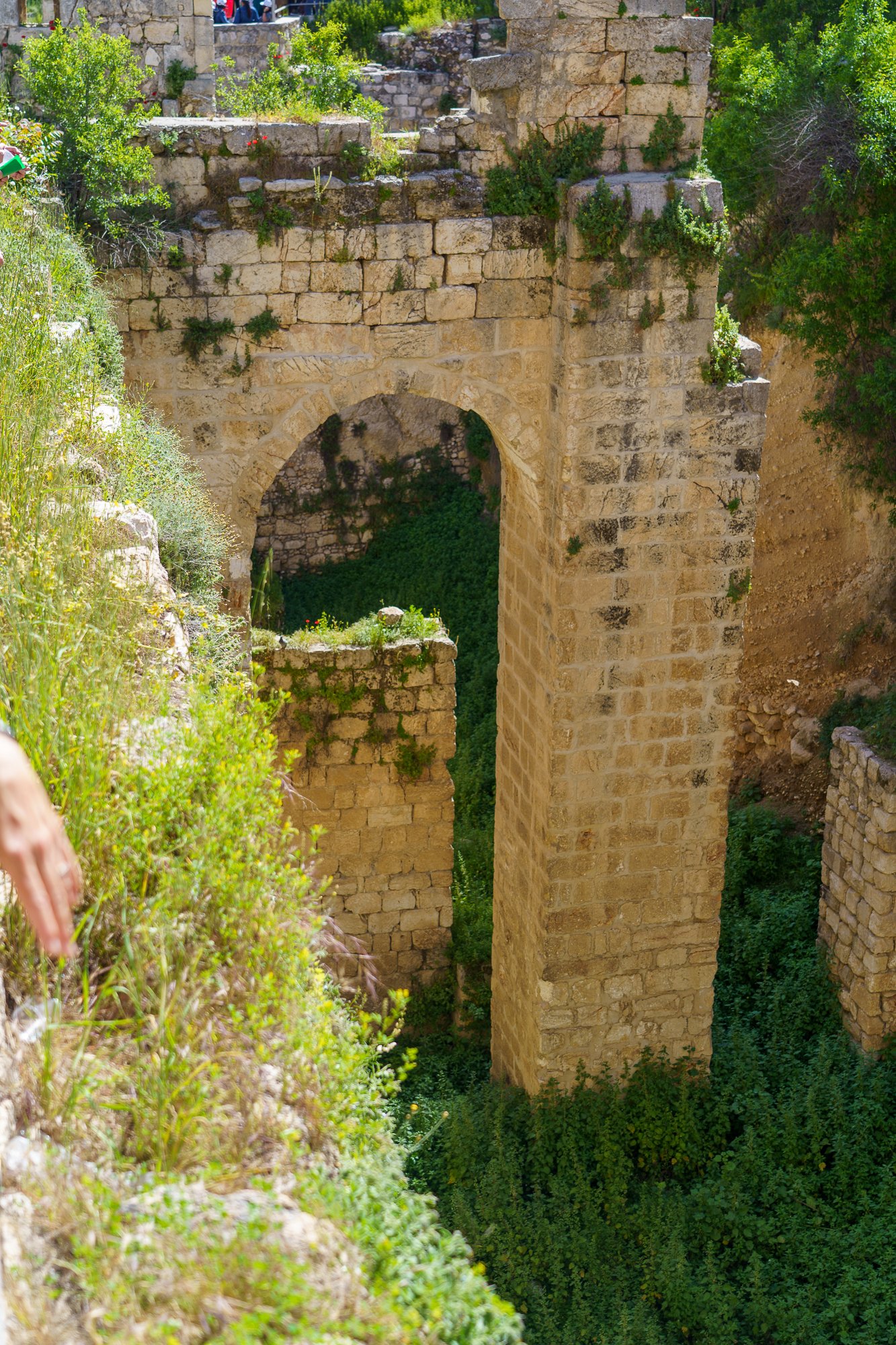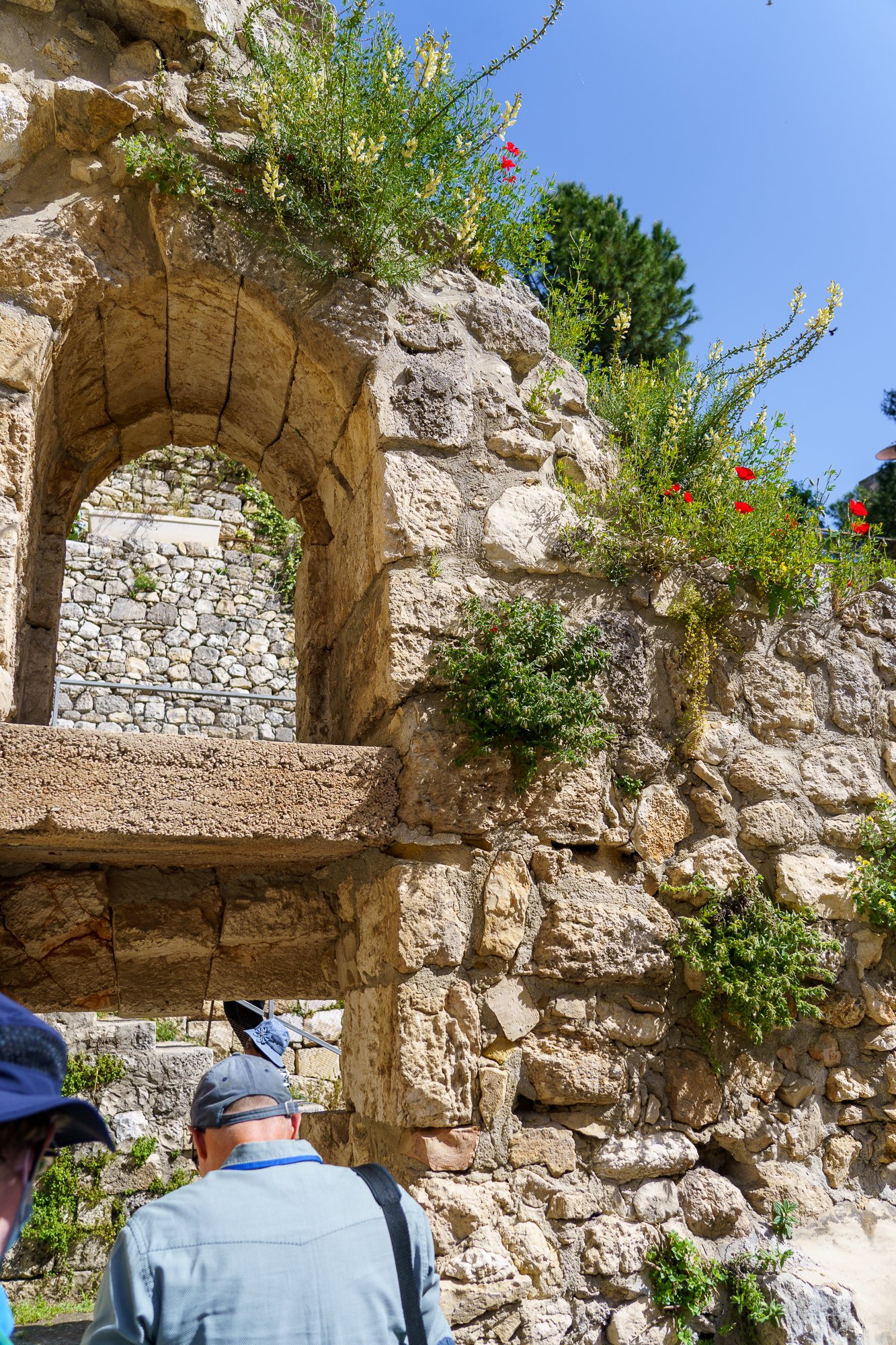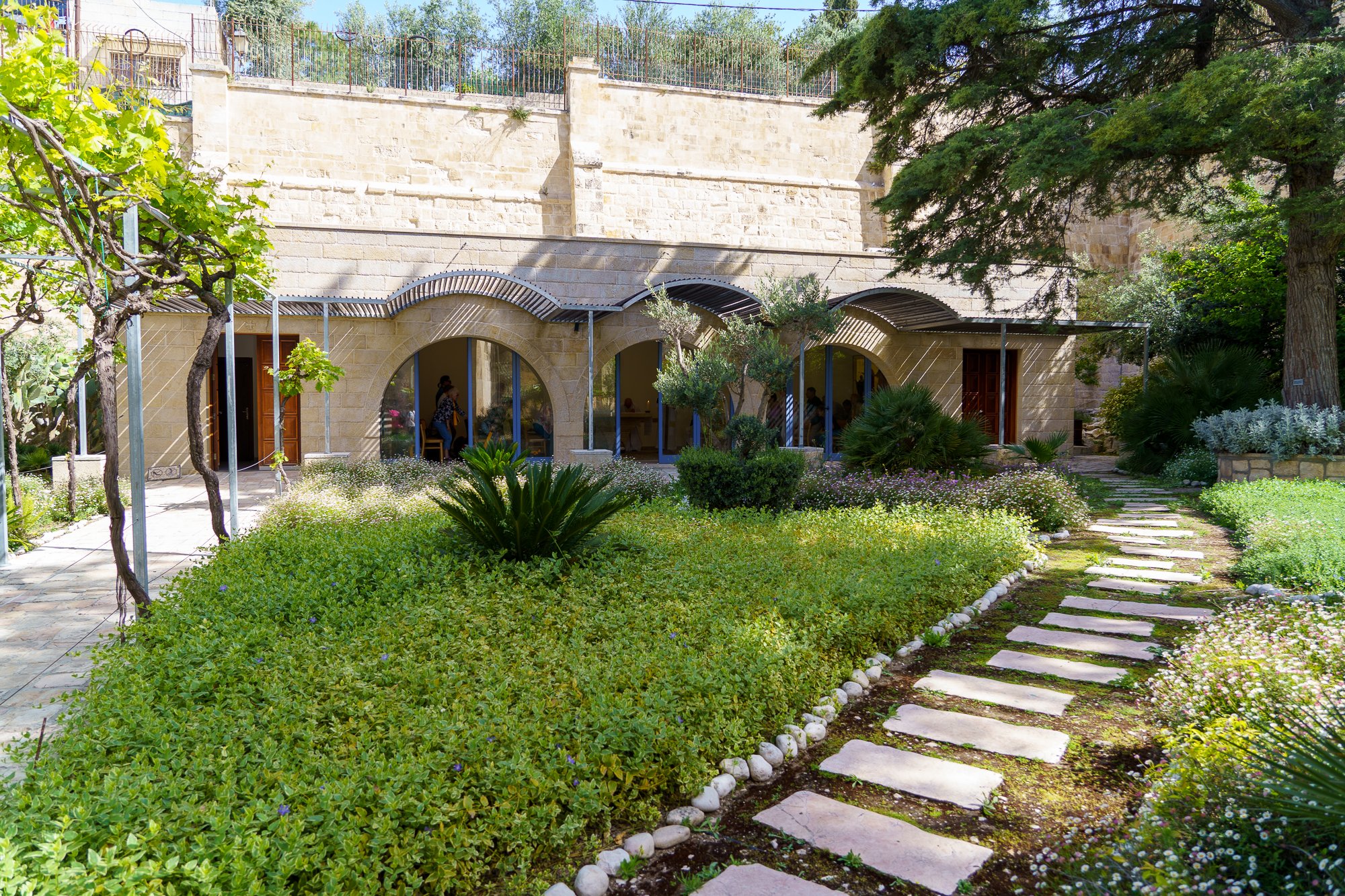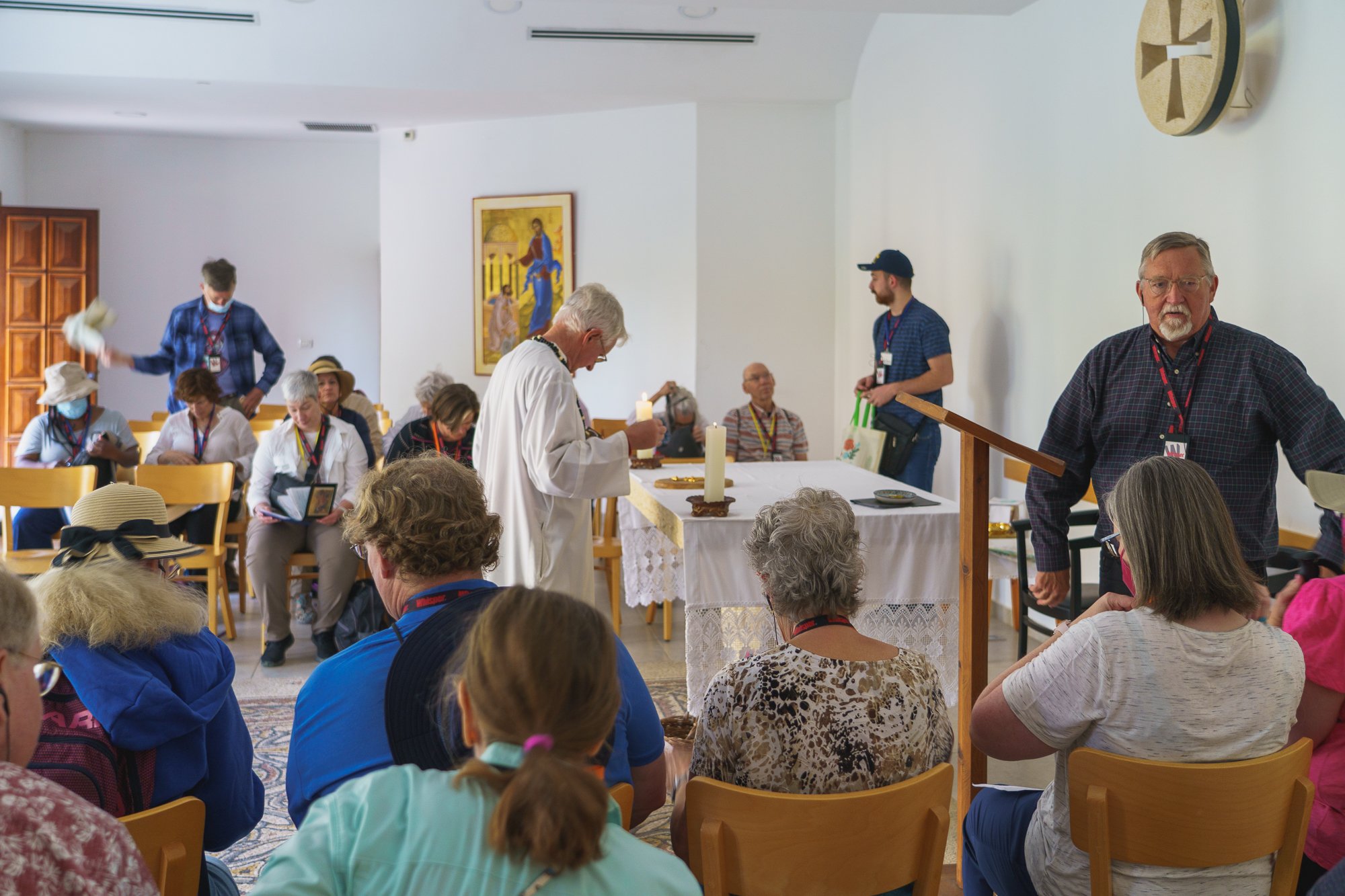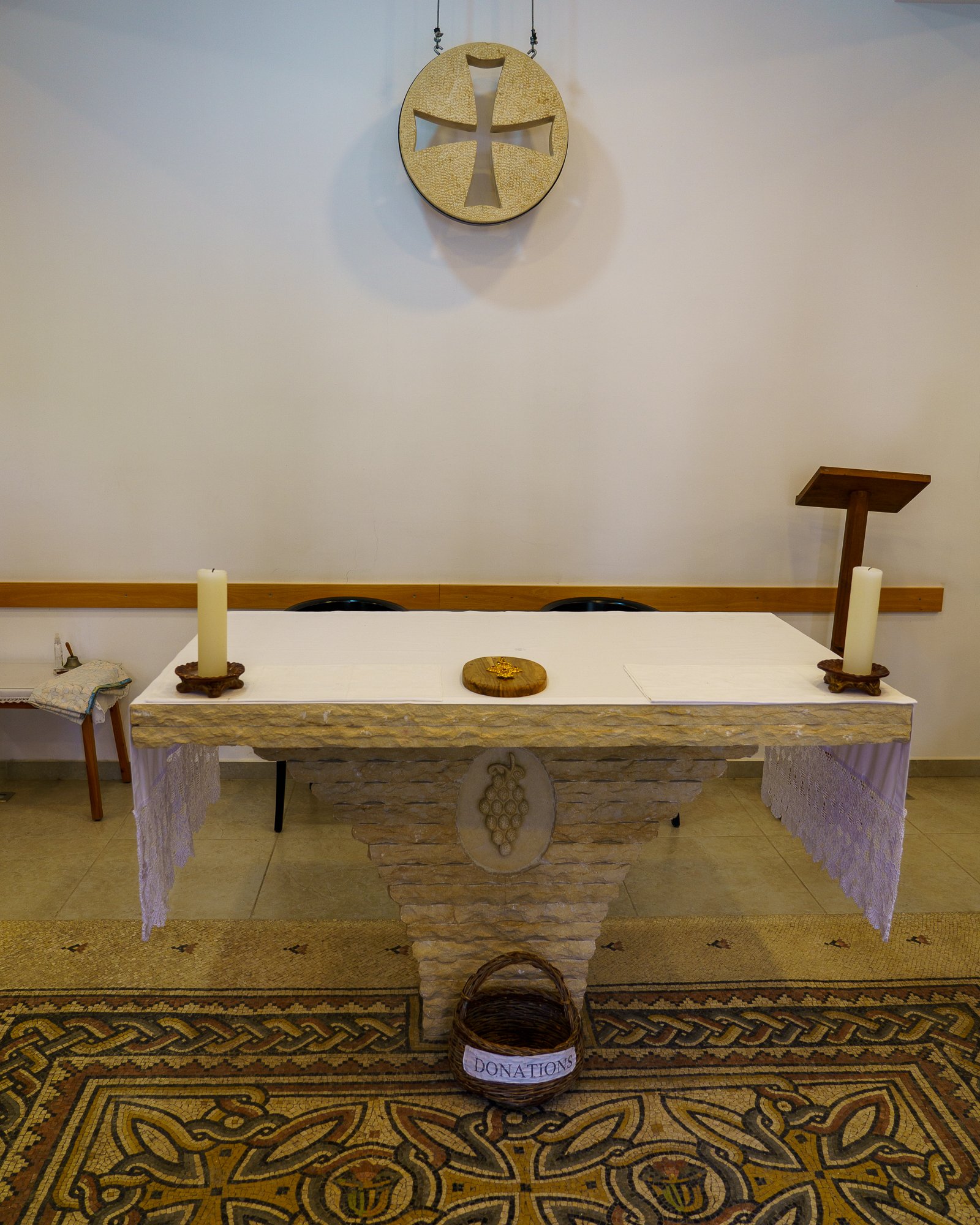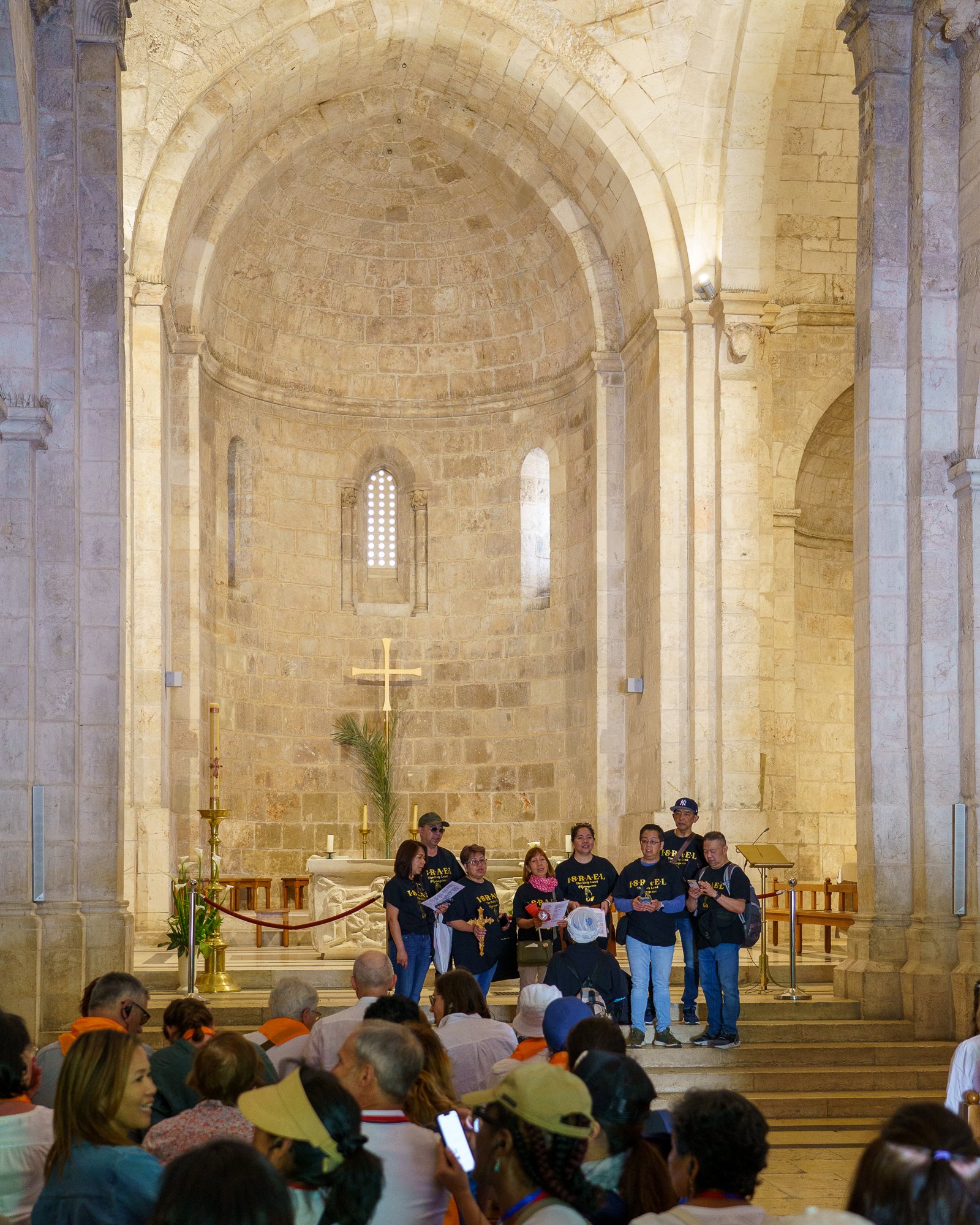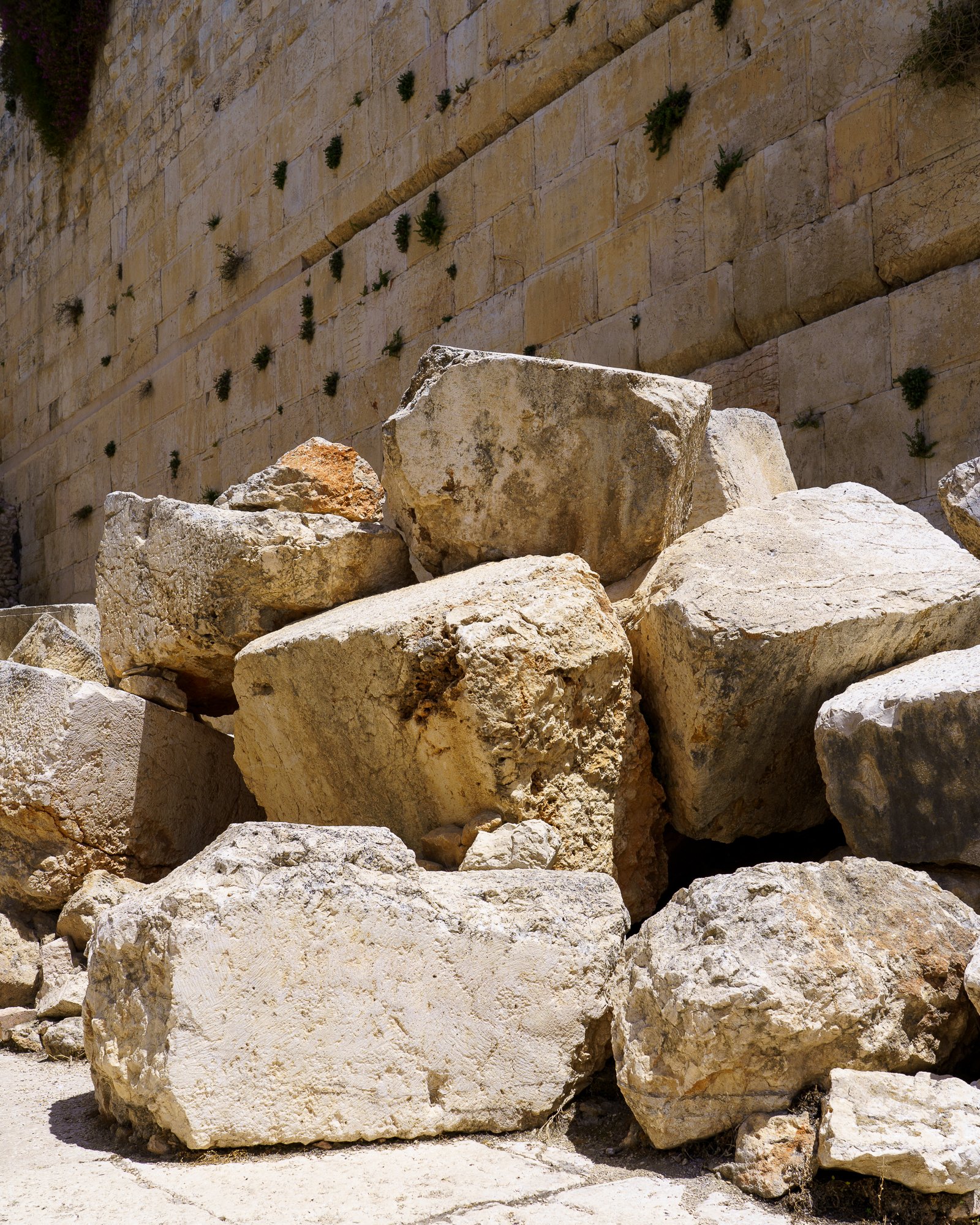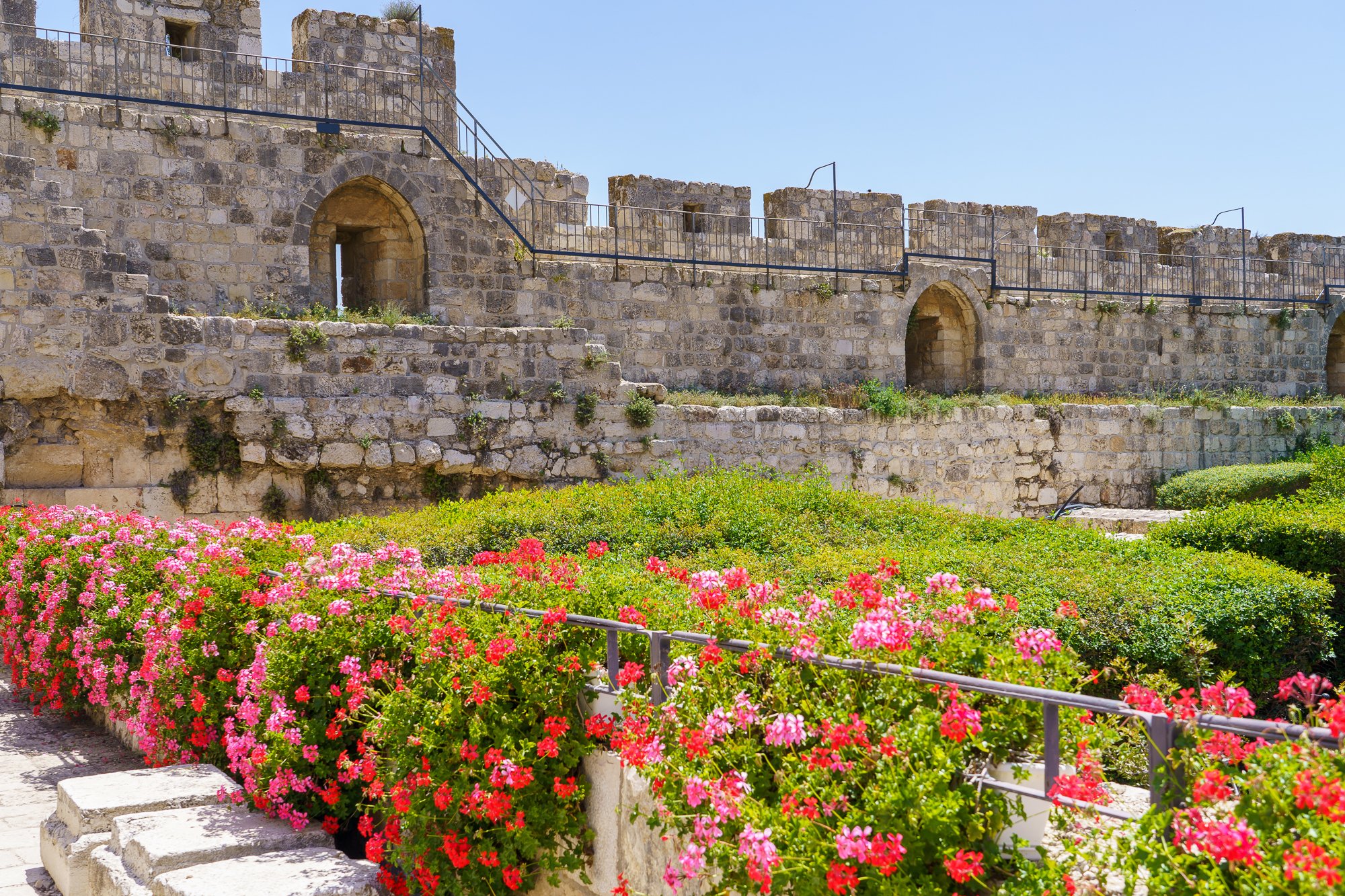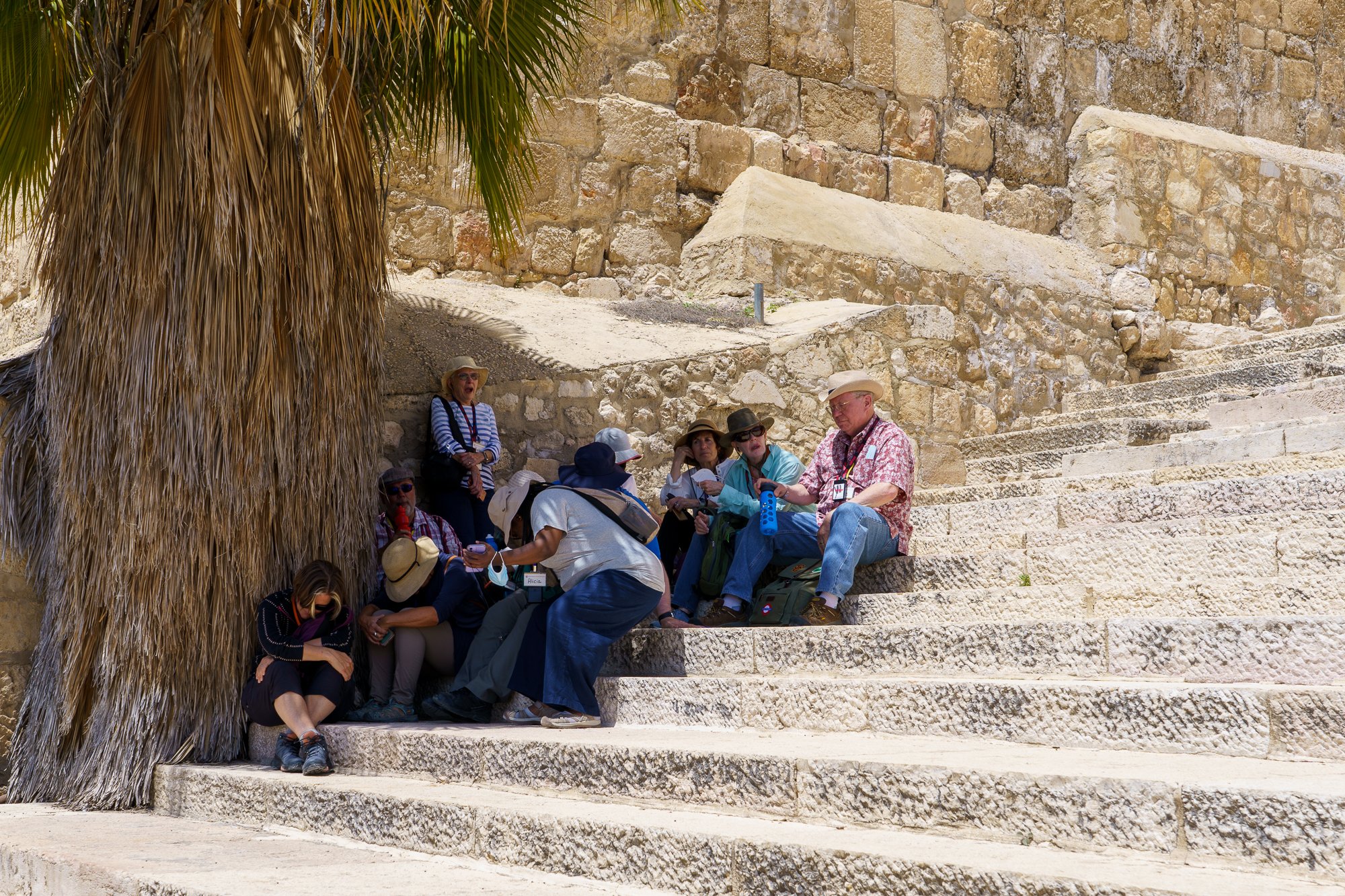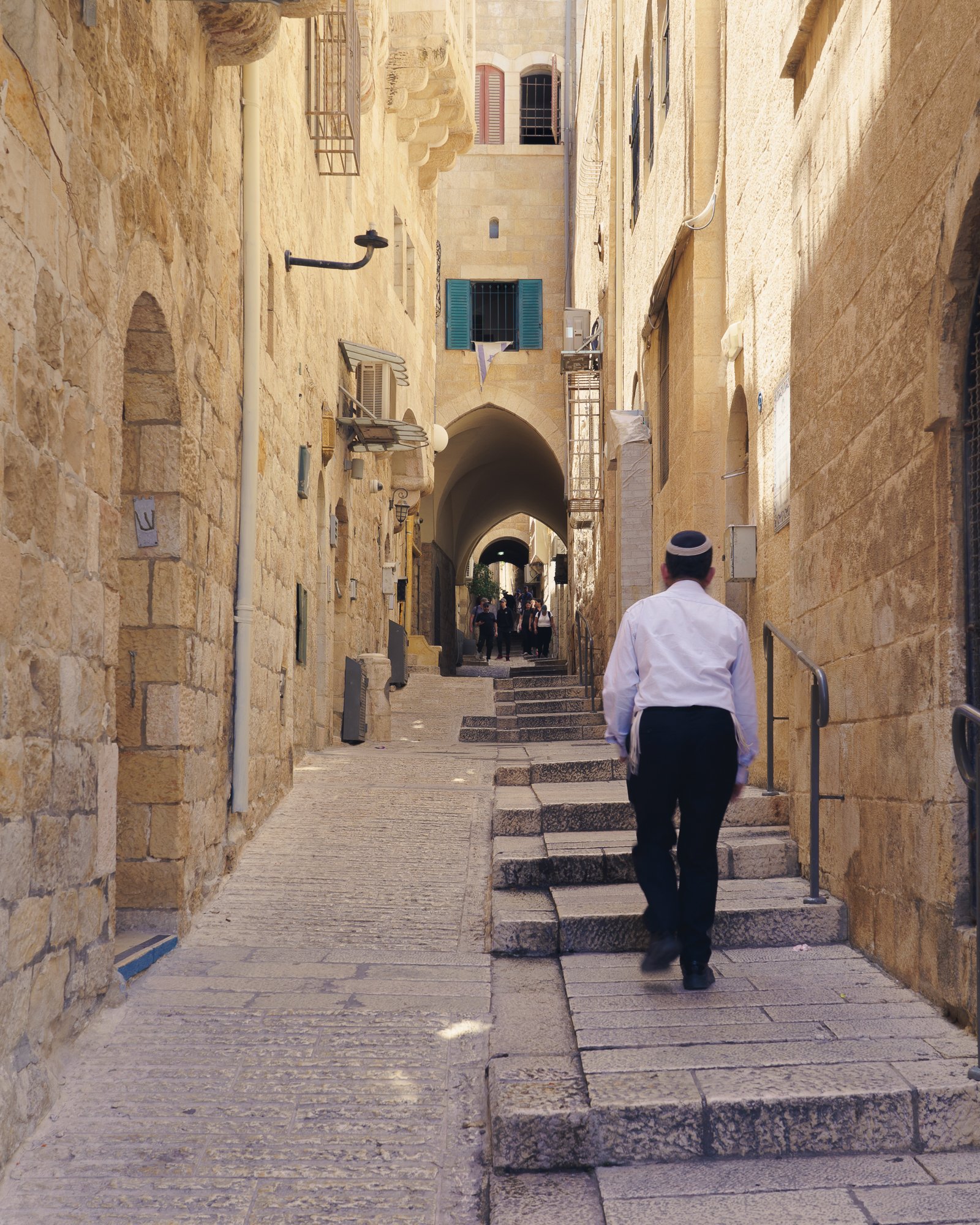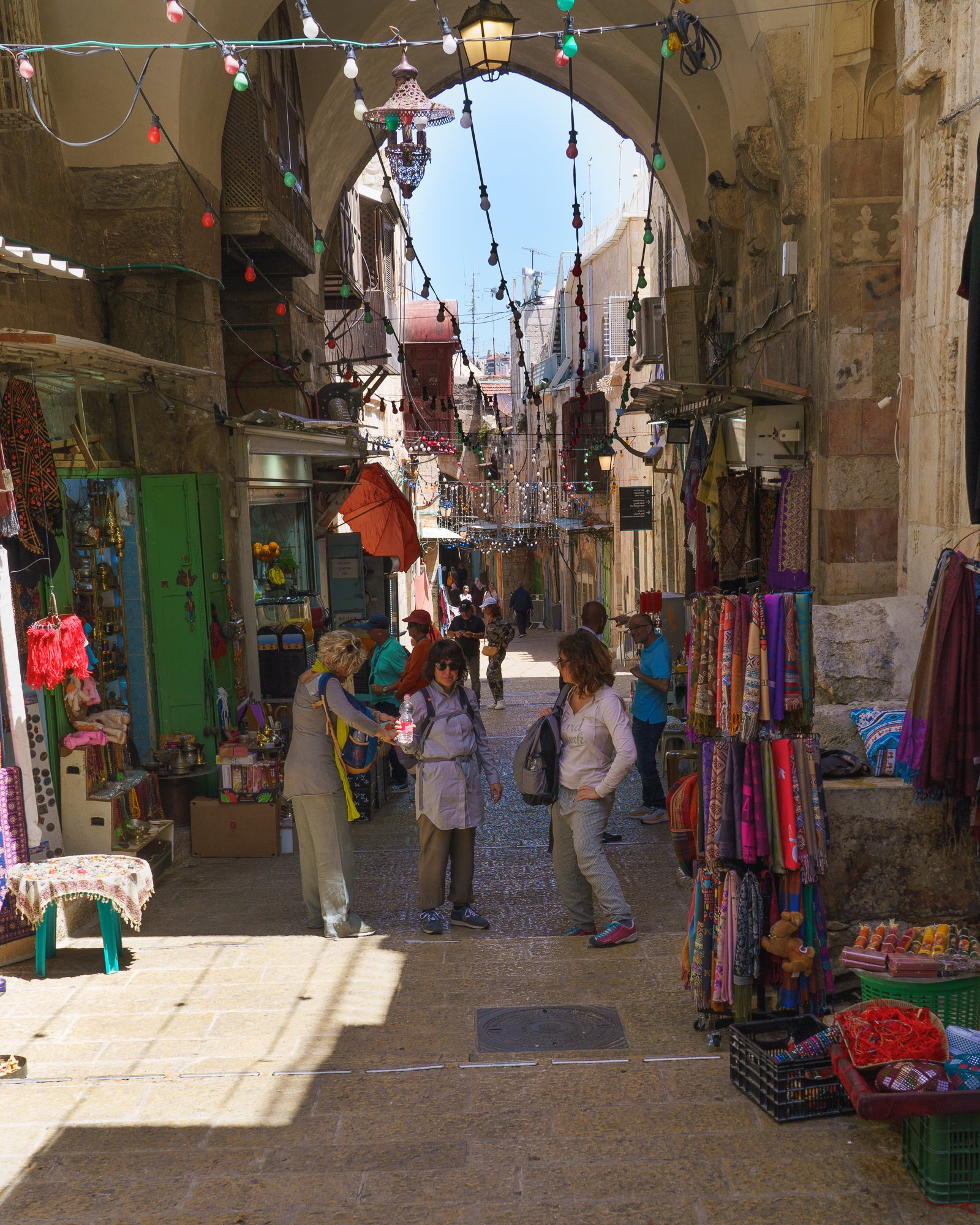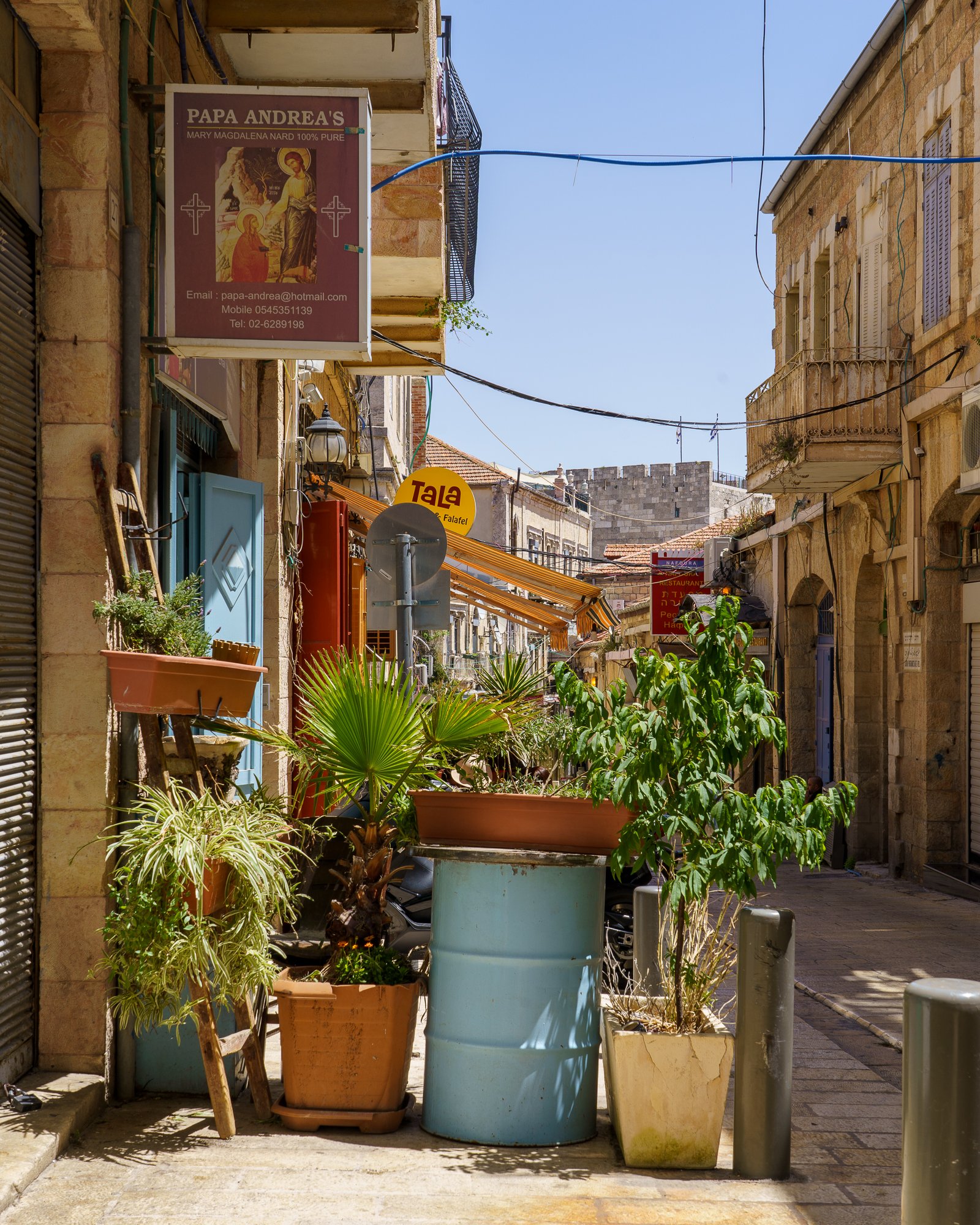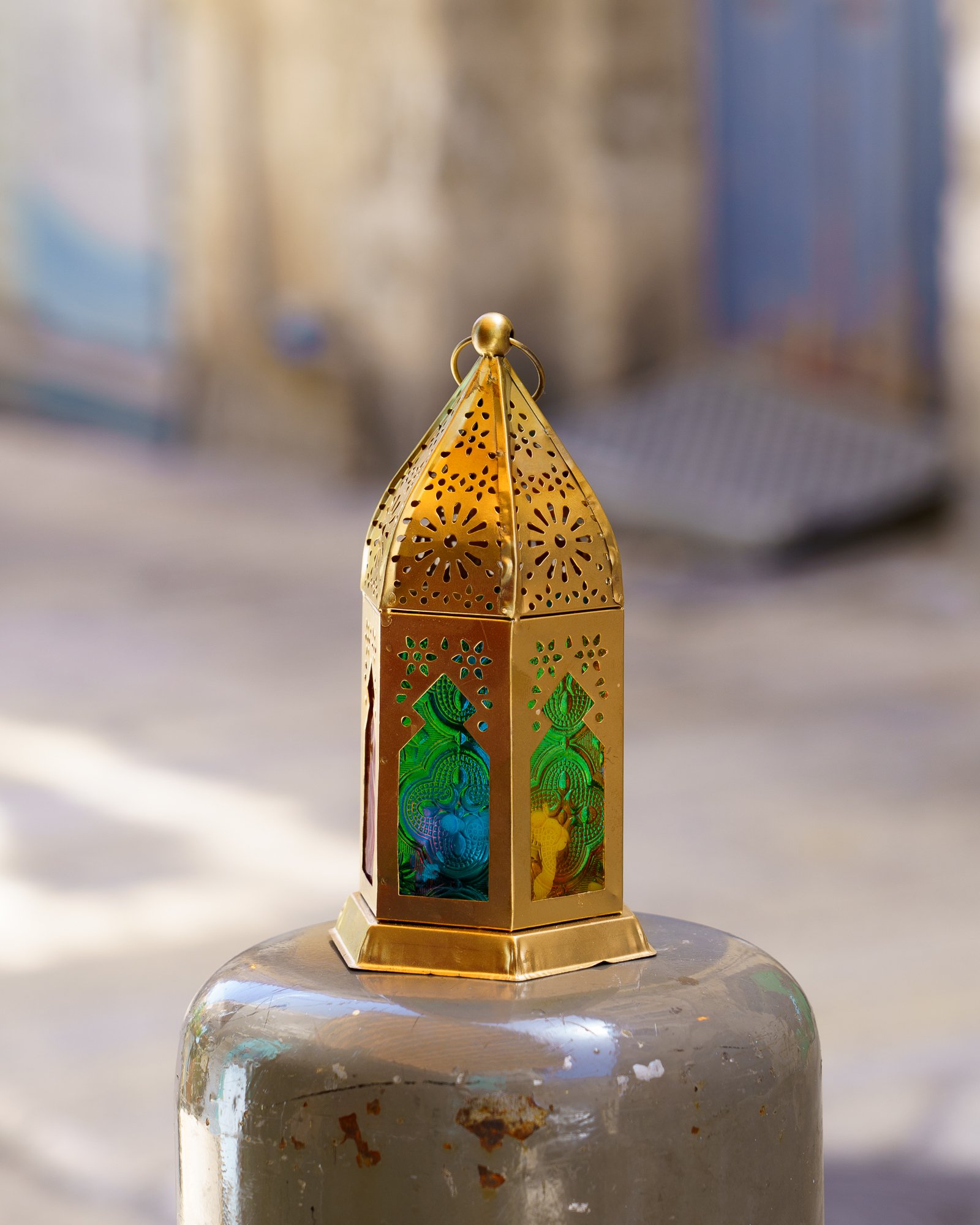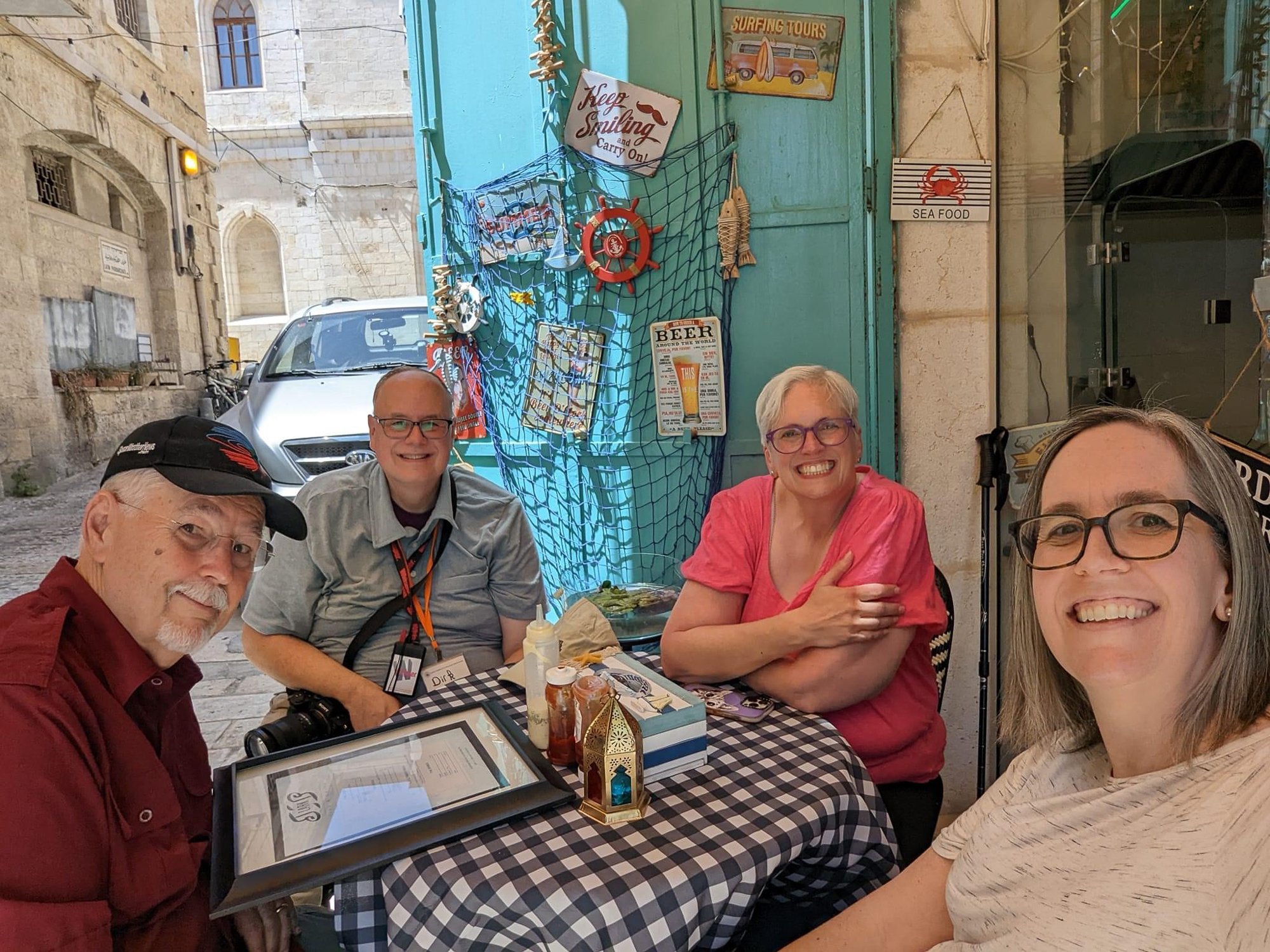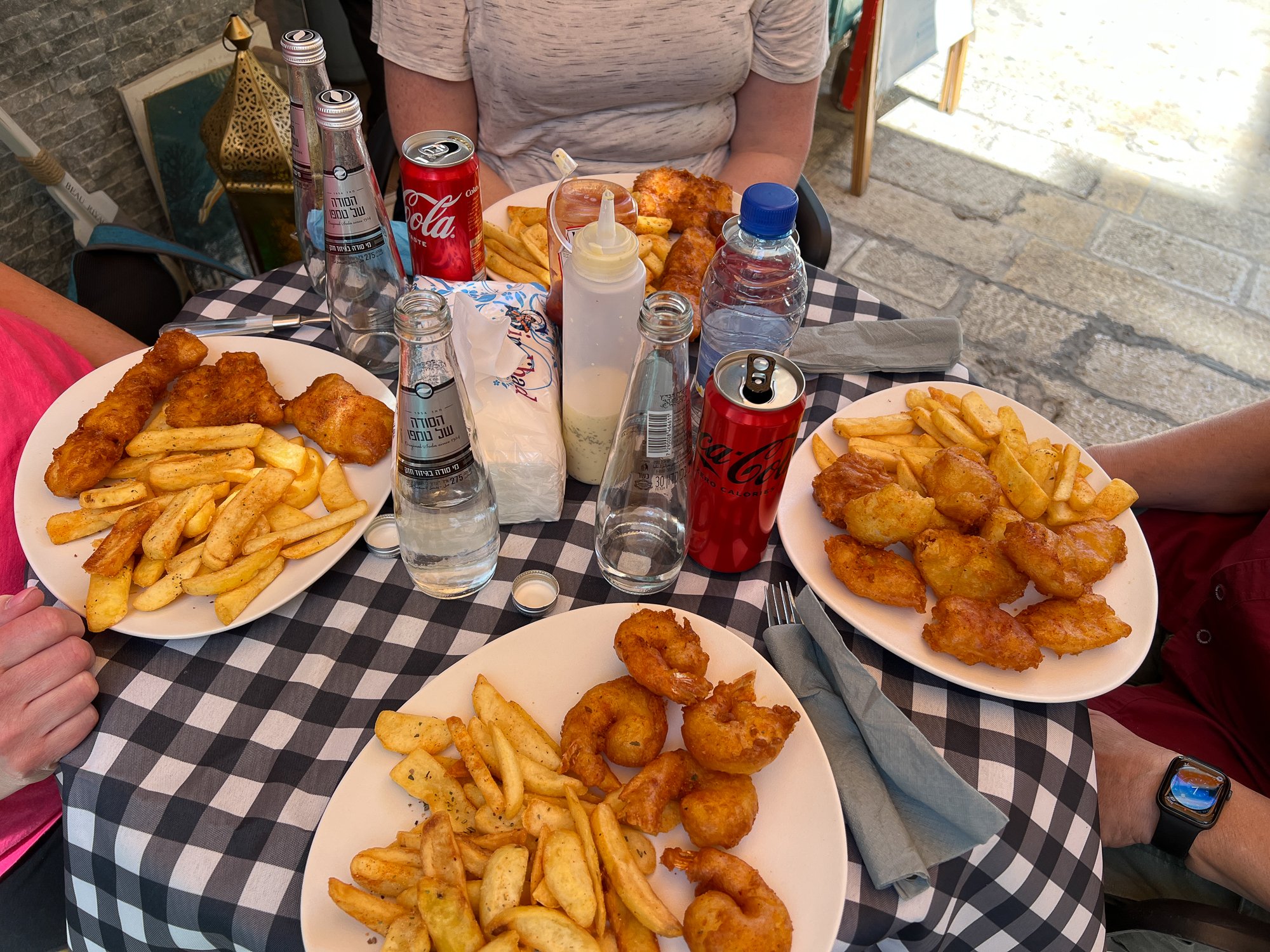Today marked our return to full participation in the Pilgrimage and a very special day - a healing service at the site where Jesus healed the paralyzed man in John 3:1-15.
The Pools of Bethesda and St. Anne’s Church were outside the city walls in Jesus’ day, near one of the gates to the Temple Mount, the sheep gate. There were two pools - one for possibly for bathing, and another for water retention that would feed into the bathing pool.
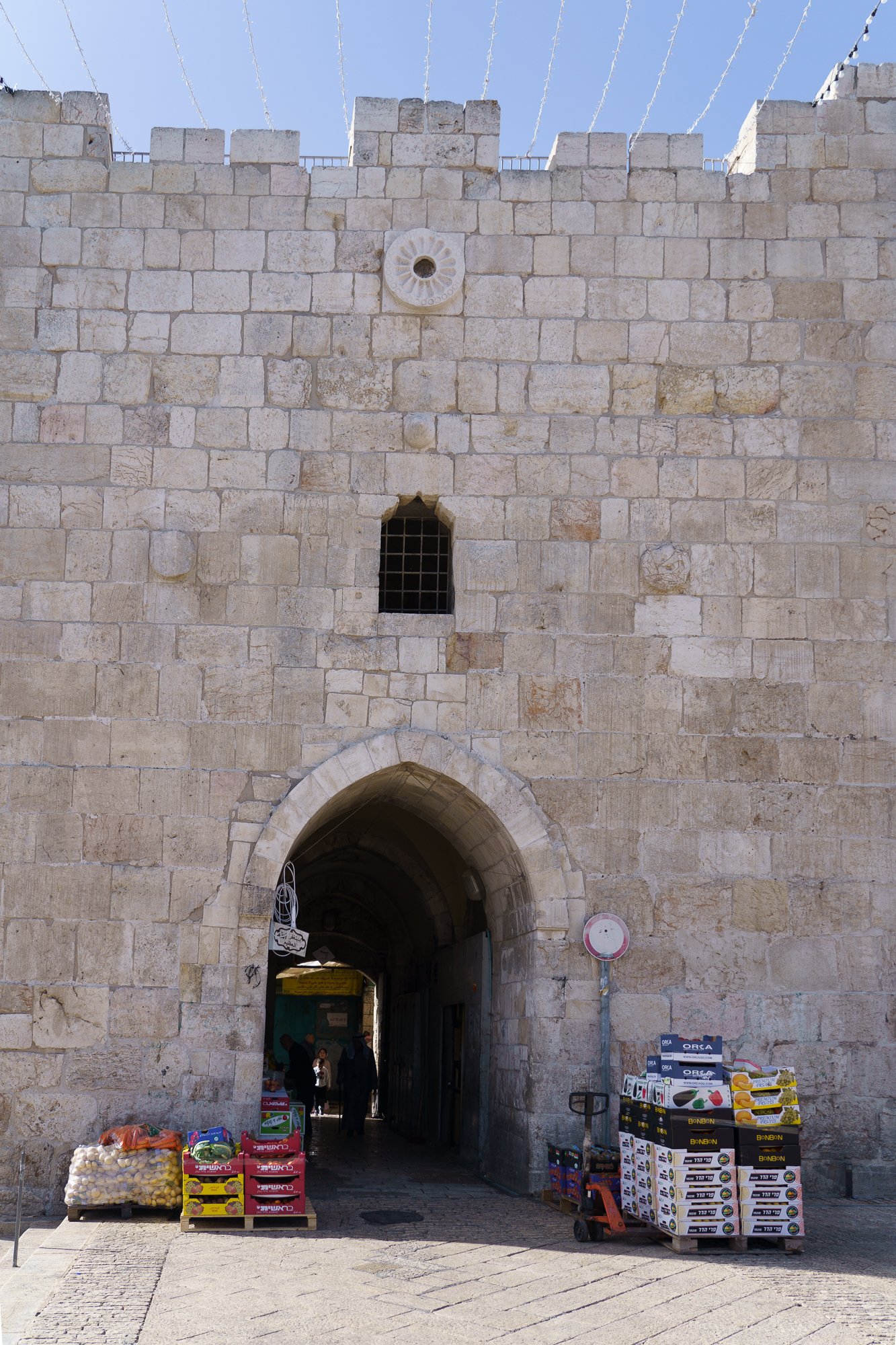
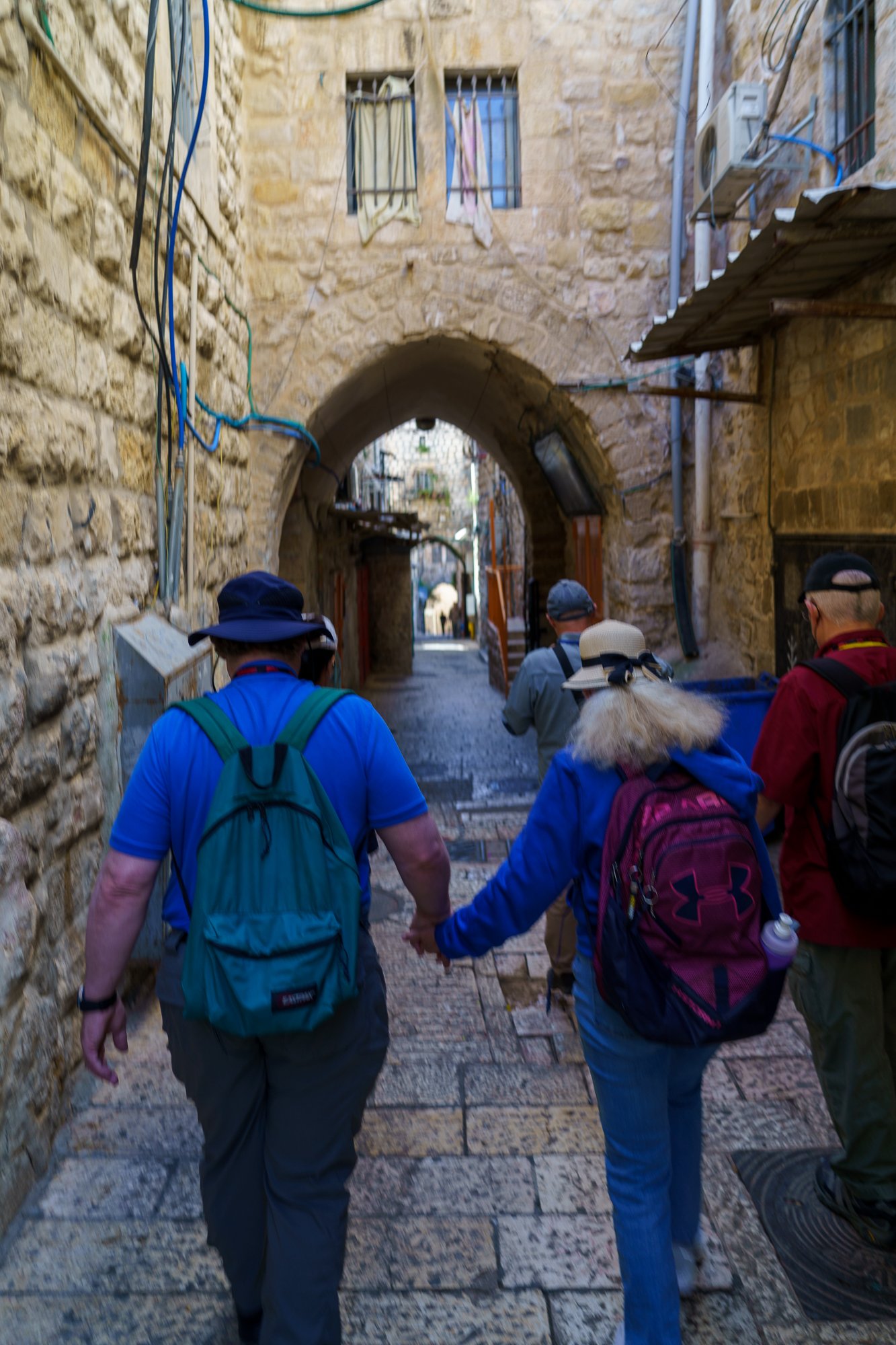
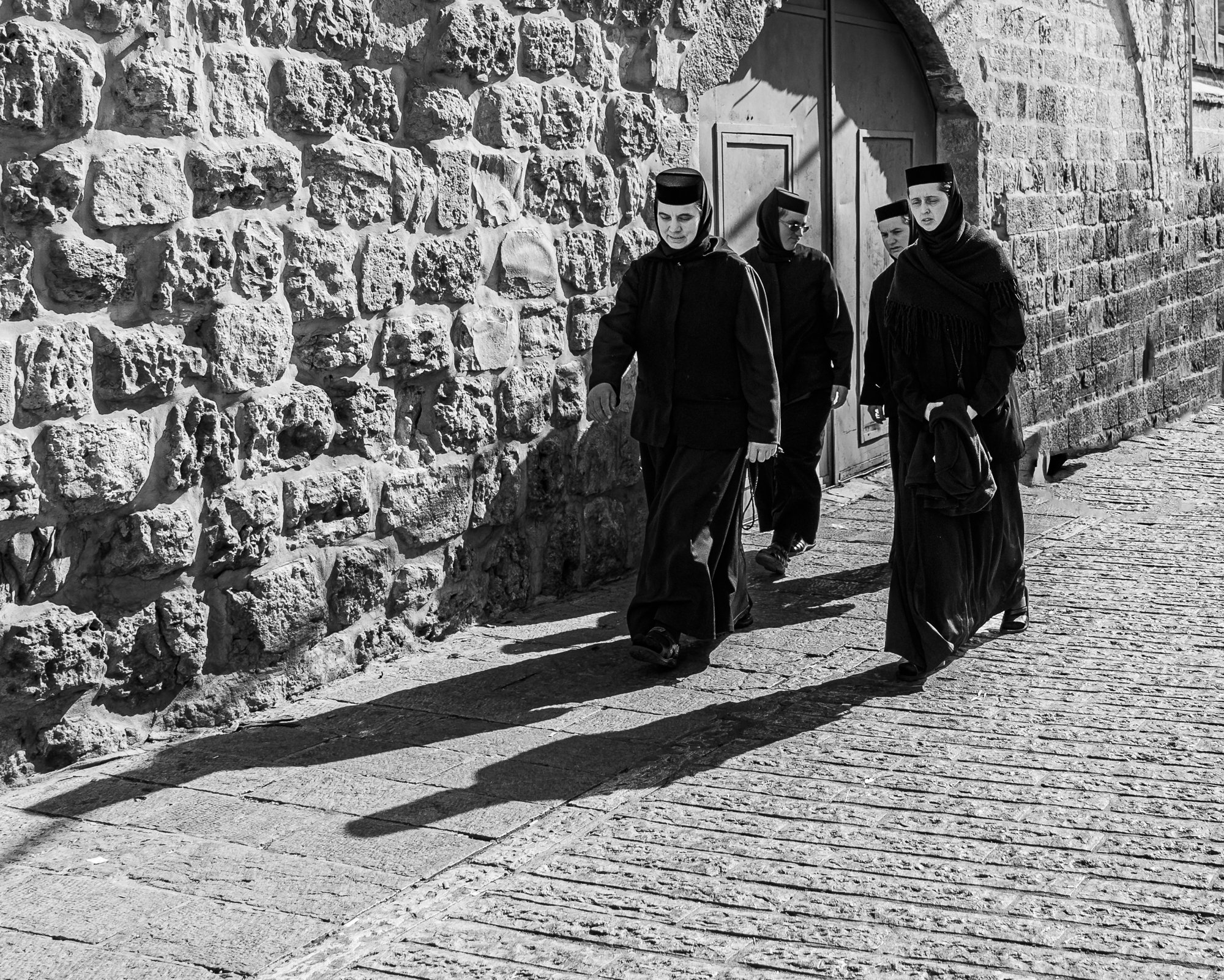
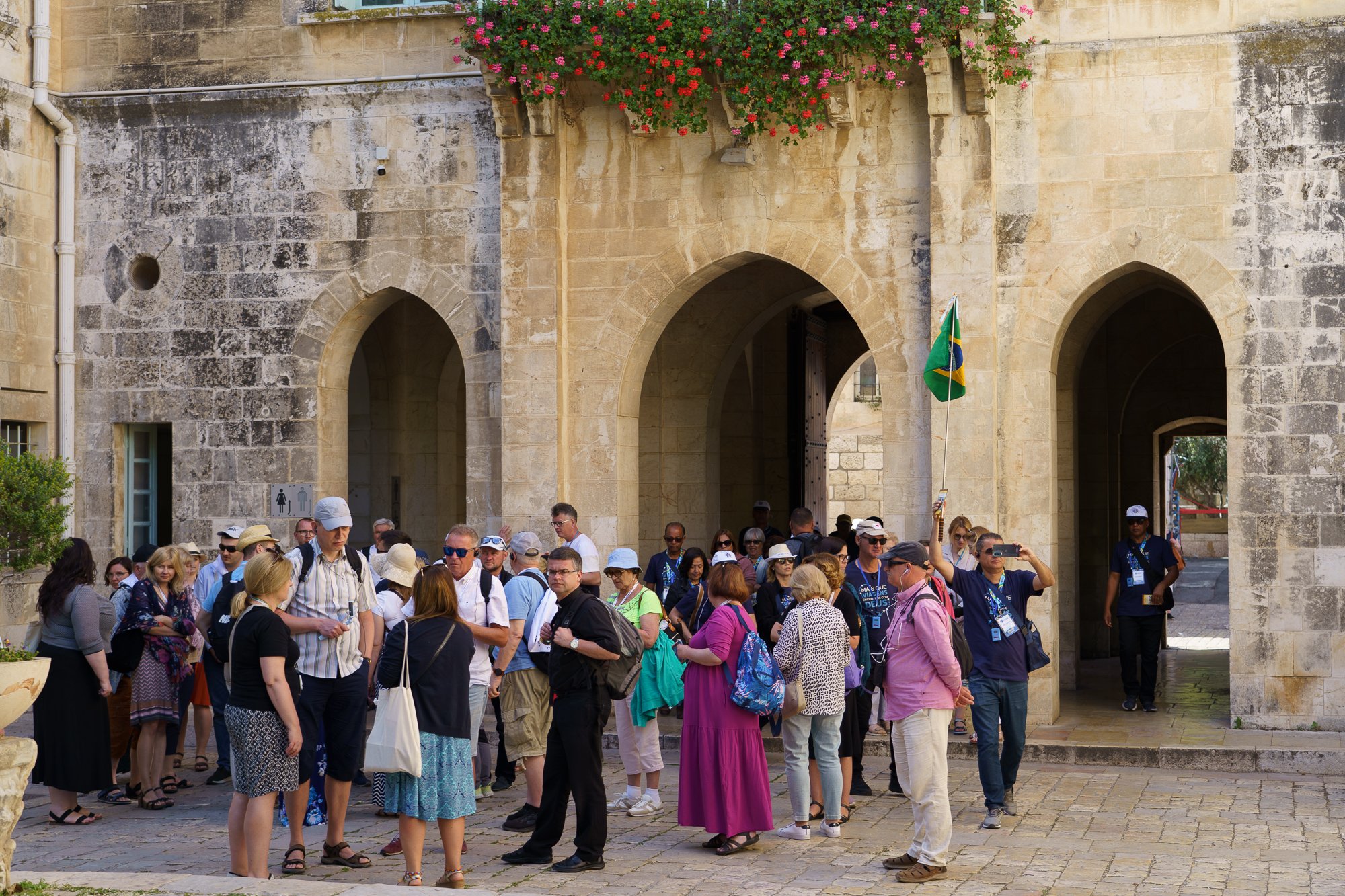
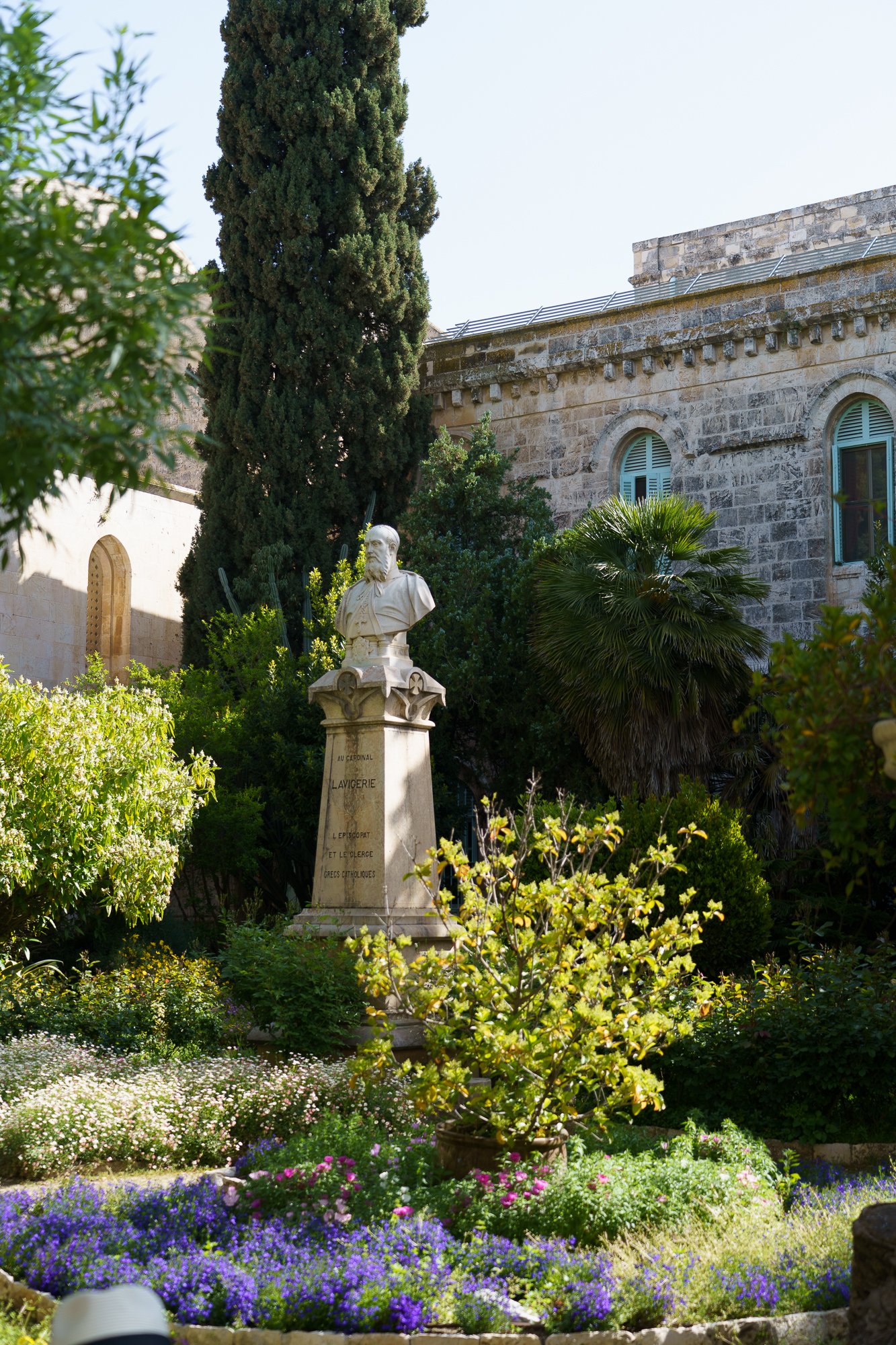
Making our way to Bethesda through another gate, Herod’s gate.
They likely had many purposes. Jerusalem was built in a hall in a desert region. Water was vital and very complex water collection and storage systems were created to manage this. The tunnels of built by King Hezekiah go back 2700 for this purpose and can still be toured today. So, the pools may have been part of a complex water collection system.
They were likely also the site for ritual baths of purification before entering the Temple precincts as well as possibly the cleaning of sheep offered Temple rituals (since the pools were by the Sheep gate, where the sheep were brought in).
In Greek culture (the dominant culture in Jesus’s day and the previous three centuries), cults of healing arose around pools. It was believed spirits entered into rushing water to impart healing powers. The gospeller John alludes to this when the paralyzed man complains that no one will move him into the pool when the waters are stirred. In the Gospel account, instead of helping the man move into the pool, Jesus is the source of the man’s healing when he tell him to get up and walk, and he can! The remainder of the passage focuses on the controversy this caused because the healing occurred on the Sabbath.
It was moving to know that healing would be the focus of our return to pilgrim activities after our COVID quarantine. Of course, we all brought with us pains, aches, and wounds of the heart and soul for which we sought healing. The pools have long returned to ruins, so we would not bathe in them. That would not be the point anyway! Instead, we would tour them and take part in a healing service in a nearby chapel.
After touring the ruins, we were taken to a back corner of a lovely garden area where several modern chapels opened onto the grounds. A local priest helped us get set up, then we had the healing service - a Gospel passage, reflection, prayer, and anointing and laying on of hands just like our own healing services.
The pools have been a healing site for Millennia. First, they were a healing site in Jesus Day. Then, the Byzantines built a church over the pools in the 4th century. When that fell into ruin, the Crusaders built a church in the high Middle Ages. Eventually that fell into ruin, too, but today a new church stands in the area dedicated to St. Anne, the mother of Mary and therefore the grandmother of Jesus. There are traditions that says this was Mary’s childhood home, but that is not our focus. The church of St. Anne is lovely, though, dating to the 1100s, and is known for its acoustics. A pilgrim tradition is to stand under the dome and sing hymns, so we gathered to sing “Seek, ye, first the Kingdom of God” as a round.
After time for personal prayer, we moved on to our next site, the Western Wall. This is the holiest site for Judaism and the closest Jews can get to the site of the Temple and the Holy of Holies for devotional purposes. The wall itself is not a wall of the Temple, but a supporting wall of the Temple plaza that dates to King Herod’s day. In his goal to remodel the city, Herod vastly expanded the Temple Complex and needed to build up the ground around it to do so. These retaining walls are all that remain of Herod’s work.
There are several entry points, and to get in you have to go pass through airport-like armed security.
The Western Wall complex is open to anyone for prayer. It is an Orthodox Jewish synagogue, so it is divided by gender. Men can prayer on one side, and women (or anybody) can pray on the other. A curtain divides the two zones. Mondays and Thursdays are Bar Mitzvah days so several Bar Mitzvahs were taking place during our visit. The women would stand up on chairs on their side to look over at their sons and nephews undergoing their sacred rites. The Western Wall plaza was not crowded and a festive mood filled the air.
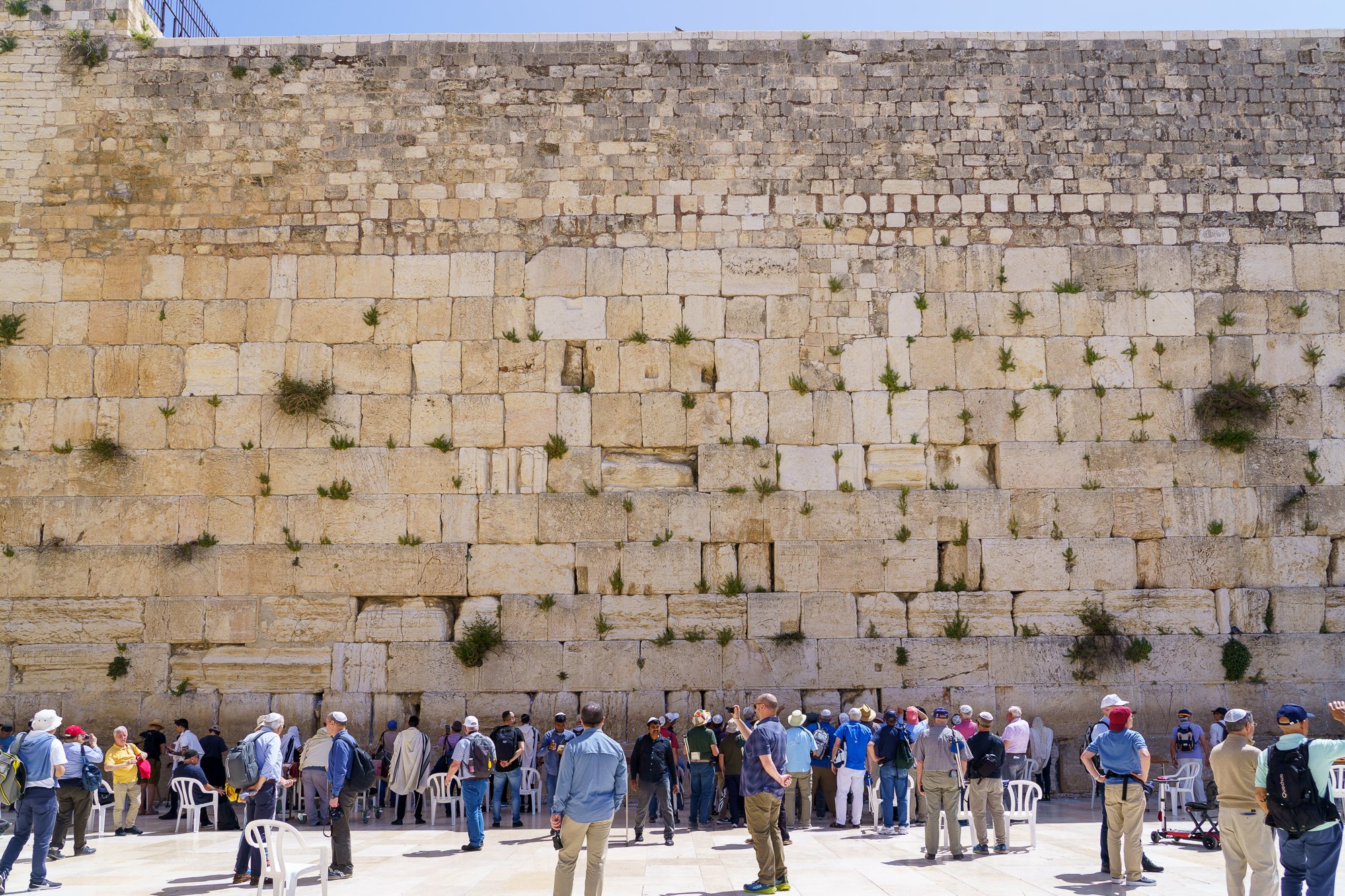
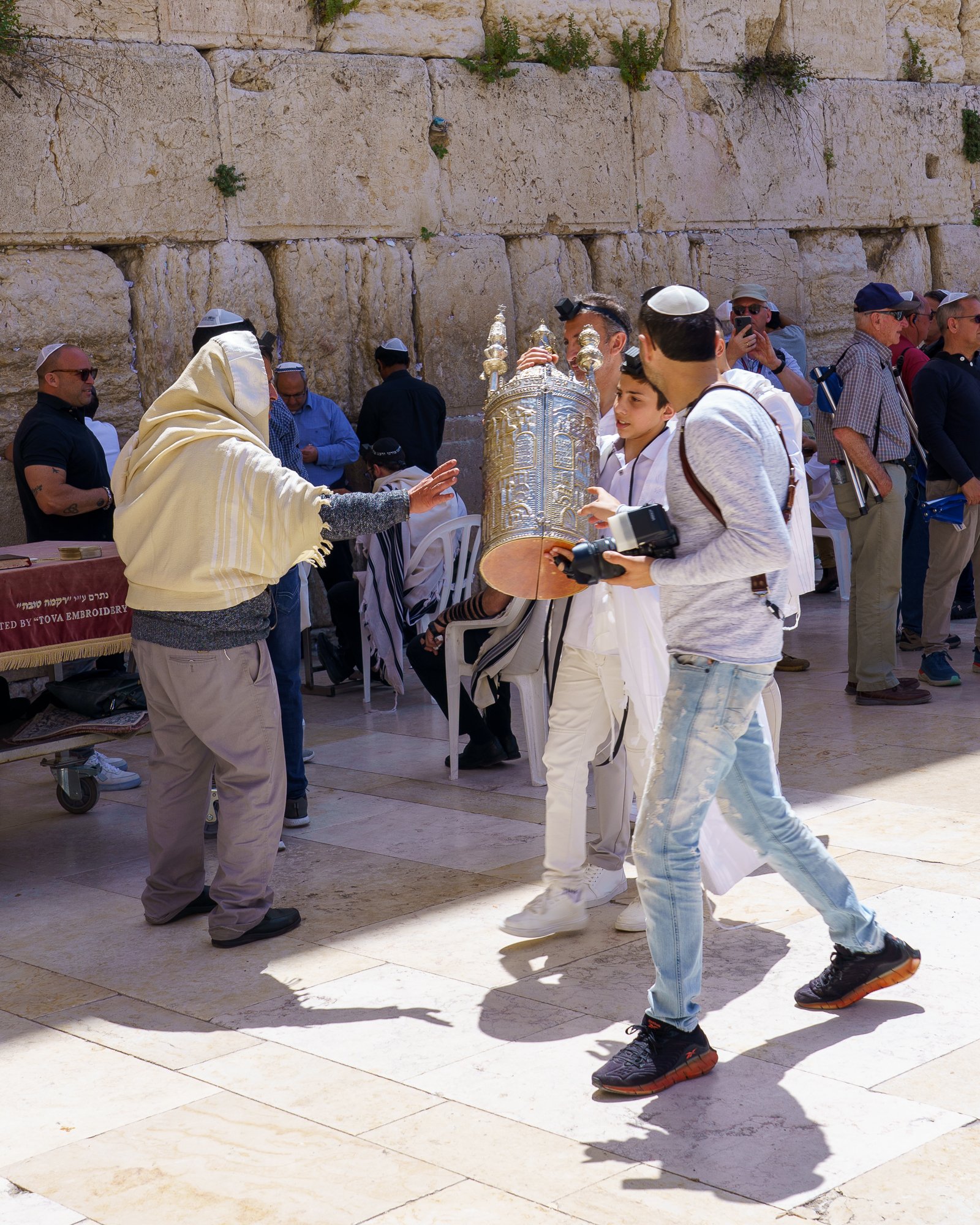
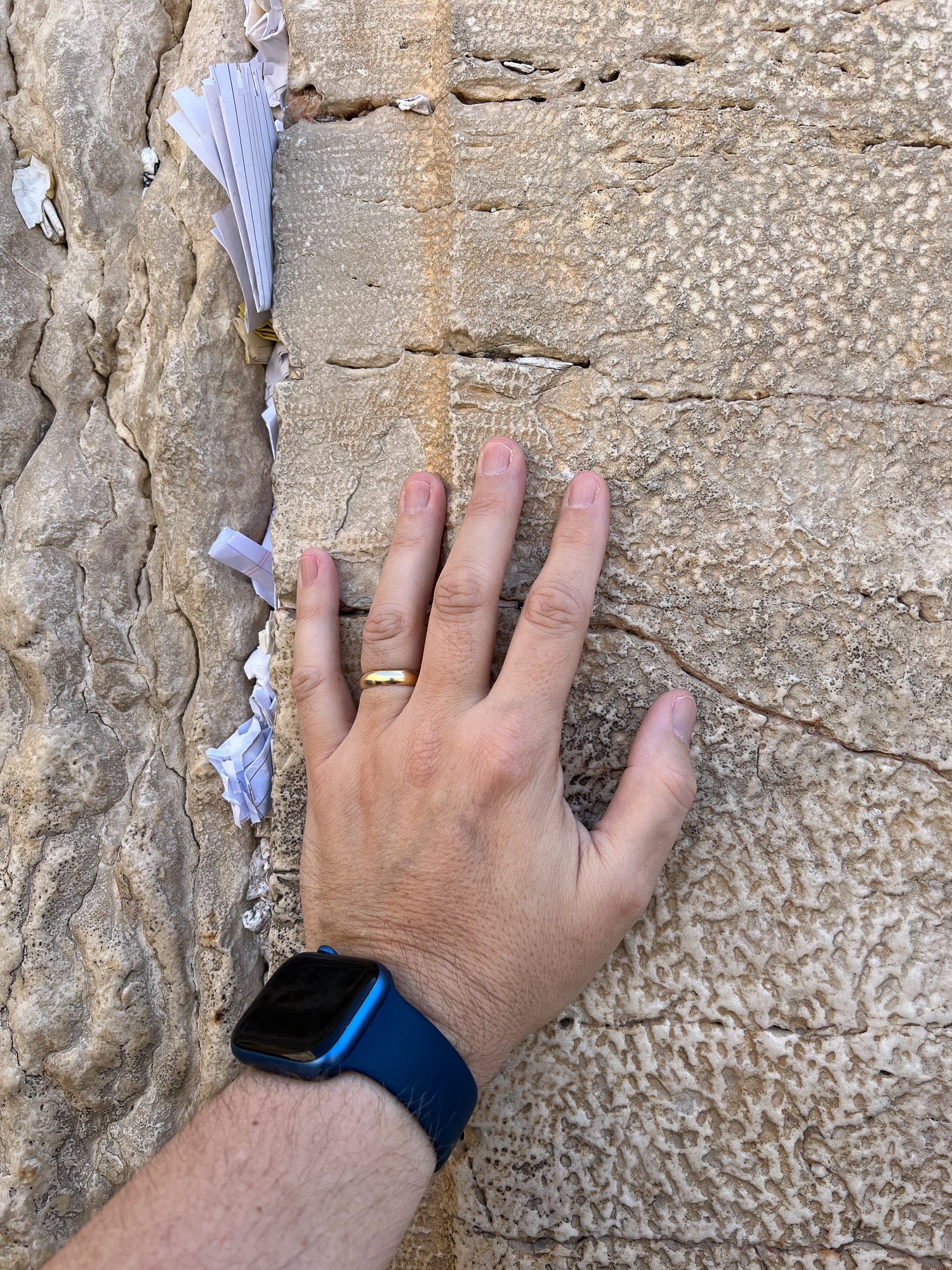
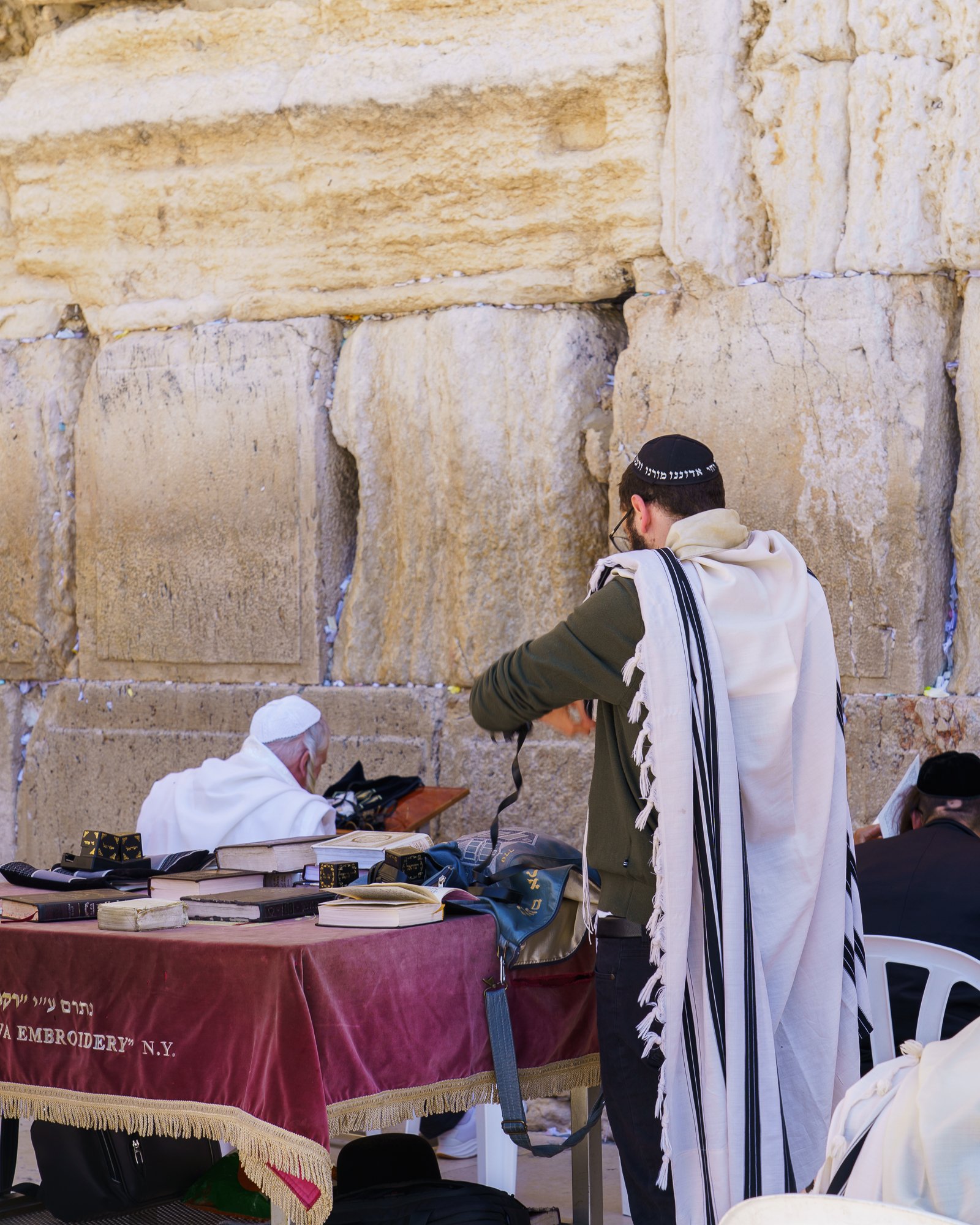
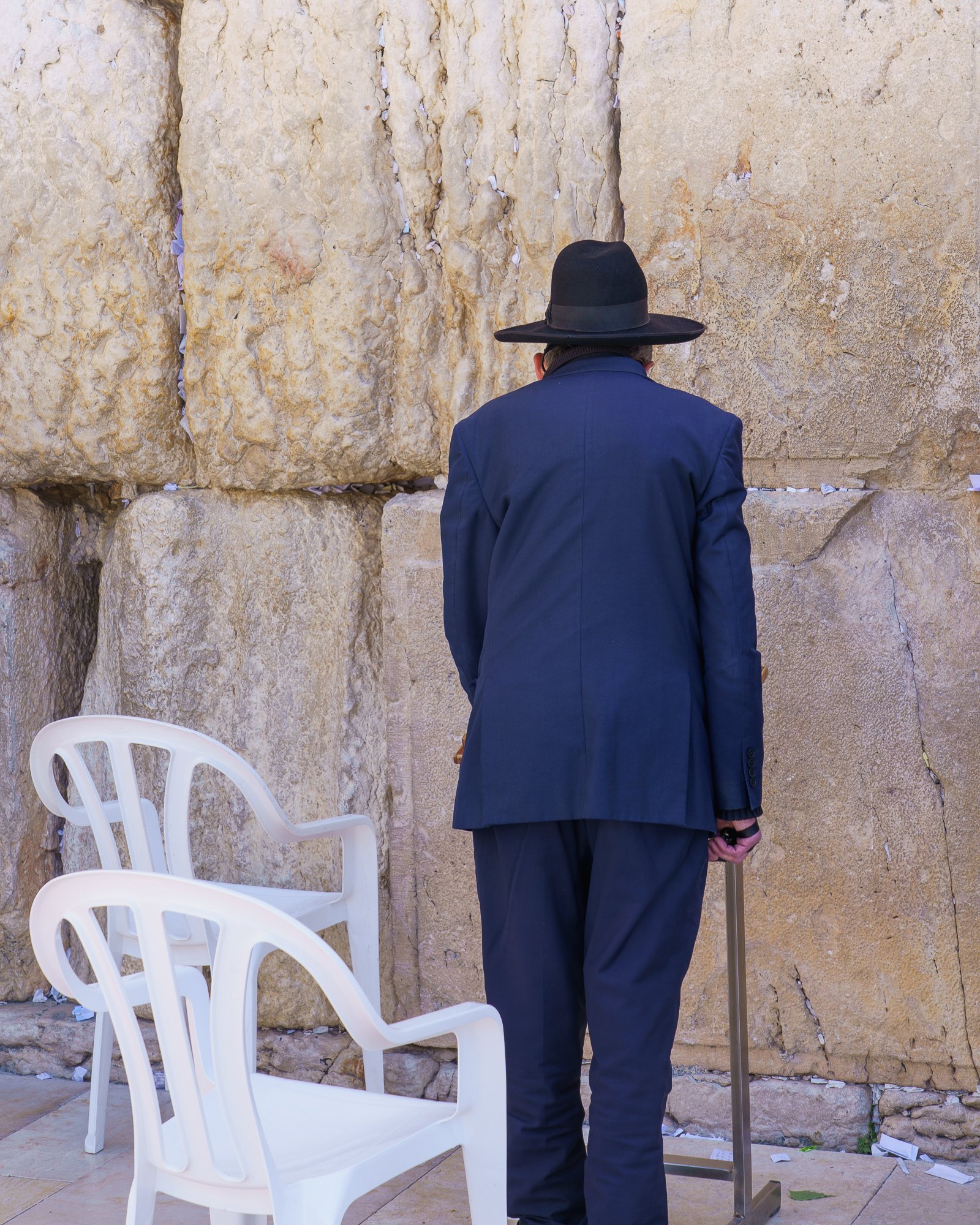
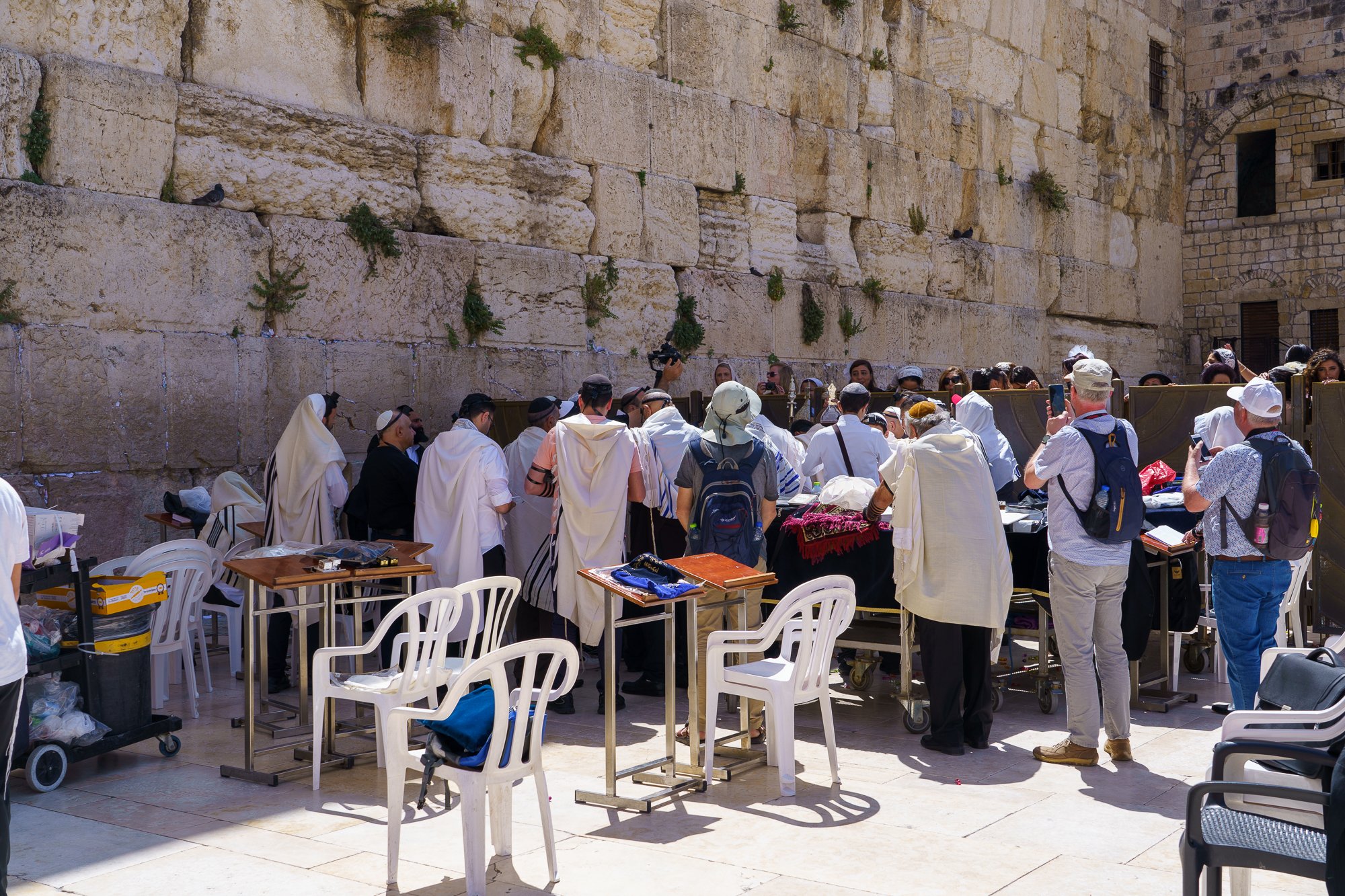
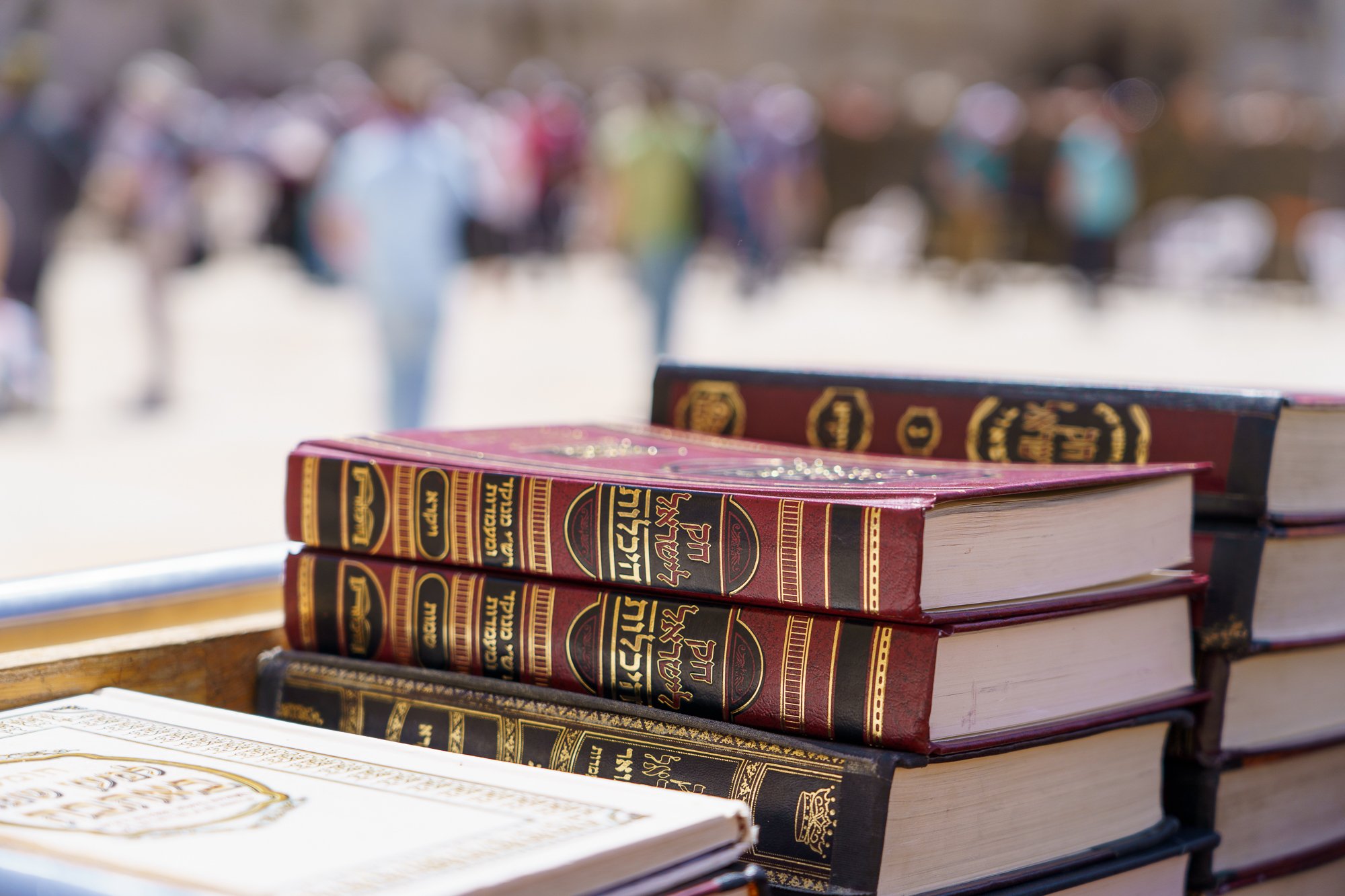
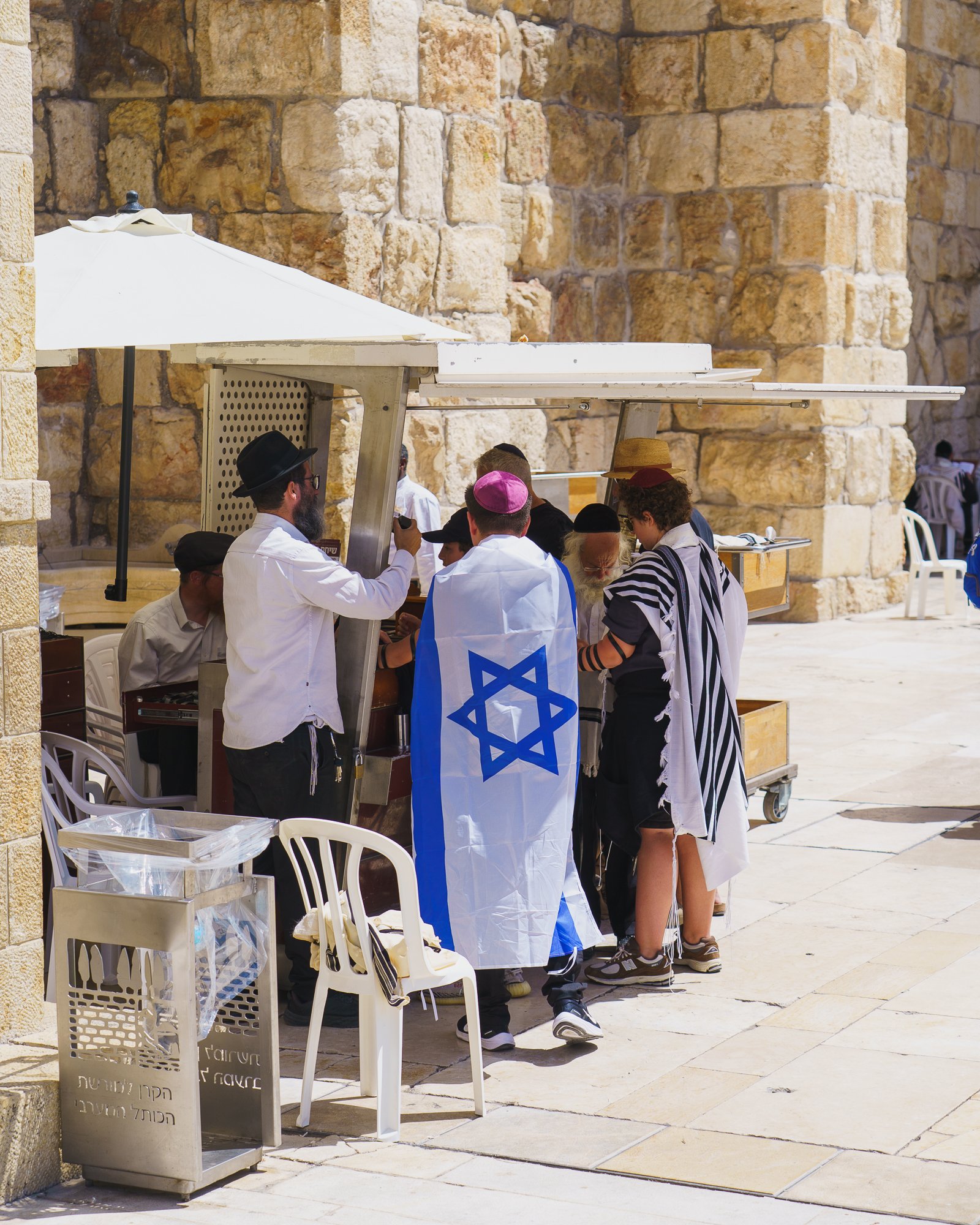
I did not have a prayer written down to insert in the cracks of the walls, but I prayed my Pilgrimage Psalm 121, while touching the wall, and then for the peace of Jerusalem.
Pro Tip: The public restrooms at the Western Wall are the largest and nicest in the Old City!!
Our final stop was the nearby Davidson Center, an archeological site focusing on the first and second Temples and the archeology of the Temple Mount. Our brief tour helped to bring alive just what a visit to Jerusalem and the Temple would have been like. At the base of the walls there were remains of many shops that would have sold food, souvenirs, and animals for Temple rituals, pretty much like all the shops in the souks leading to the holy sites today. Jesus’s parents would have stopped at one of these to purchase the offering of birds they would make at Jesus’s presentation in the Temple.
We spent time in devotion and prayer on the steps to the main entrance of the Temple compound (long since closed up, of course). This is where people would hang out, teach, preach, and gather as pilgrims for Judaism’s holy days.
Everything we saw today were ruins, but the careful preparation and teaching started to bring them alive to us. I began to feel what daily life might have been like for Jesus and the disciples and find parallels with our own experiences. I started to a feel a real closeness to the human Jesus in ways I had not nurtured before, more often focusing on the divinity of Jesus. Yet, emphasizing Jesus’s divinity at the expense of his humanity is as much of a heresy as the other way around. I felt my faith coming into a better balance. It was good to be back with the group!
We had free time for the afternoon, so Leslie, Loren, Jim, and I made our way to a fish & chips shop recommended by the Dean’s wife. Loren was still recovering from Norovirus and wanted comfort food. We climbed up flights upon flights of steps through the Jewish quarter to make our way back toward the Jaffa gate and Christian quarter. We found our restaurant, which was tiny! Just two tables outside and two table inside. The owner quickly set up a place for us and we enjoyed a tasty classic English meal in the Catholic sector of the Christian quarter in Jerusalem. The Holy City is where the world gathers, after all!
Afternoon was spent shopping. Jim and I picked up a some icons from St. Catherine’s Monastery in Mt. Sinai (known for its icon traditions) and Jerusalem focused clergy stoles. Leslie went to get her tattoo, and we relaxed I the gardens of the college before dinner and a quiet evening. This was easily a 15,000 step day, so I’d say we had recovered from COVID. Praise God!


